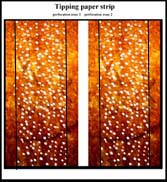
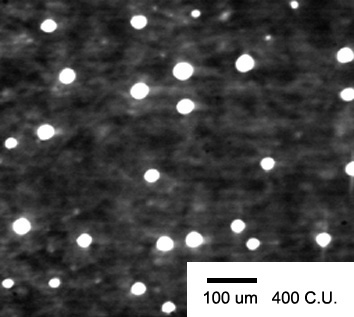
Micro Cluster Patent Technologies
MLL-1 micro laser line perforation real alternative for galvanometer scanner, cluster micro technology for hole pattern, perforation design, waves, zigzag or packages lines, cryptograms, company logos, holograms, anti counterfeiting, security paper, safety, bank note, metal sticker, printing, laminating, coating, credit cards, transparent films, holographic paper, cigarette, tipping, filter, aluminum foils, shrinkable films, tear tapes, labels, cardboards, bar or matrix codes, marking, scribing, jewelry, automotive, pharmacy, golf, smoking, chemical or medical product, electronics part, indicators, porosity contours or profiles, embossing, bioengineering, membrane, filtration, focus, holographic, hinge-lid, pack, hole, porous, hole, line, micron. Patent pending for process, device, product property DE102004012081.
LPM-1 micro laser perforation at wide web, large area, surface or whole material cluster treatment, cutting, welding, drilling, ablation, cleaning, melding, high power dual rotation laser beam splitter, twin multiplexer level, 4/6KW optical input, flexible hollow fibers, 200 output channels, Co2, Yag, Excimer, UV, emission. Material treatment and robotic handling for stainless steel, ceramic, aluminum, wafer, gold, glass, silver, brass, copper, titanium, diamonds, jewelry, silicon, solar, panel, photovoltaic, micromachining, slitting, rewinding, refining machines or stand along systems. Patent granted for process and device DE102004001327.
Nano Micro perforation or other material including surface treatment, electrostatic nano micro cluster perforation for cigarette, tipping, filter, packaging, plug wrap, Kraft, cement sack, bag, fine and other paper, silicon or other coatings, certain plastic films, laminates, porosity from 80 up to 2500 Coresta Units, from 20 down to 6 Gurley, hole sizes from 50 nm up to 100 microns, hole densities from 80-260 h/cm2, zone widths from 2.0-6.0 mm, up to 16,000,000 holes per Second, web speeds up to 500 m/min, web widths up to 2000 mm. Patent granted DE10328937.
Twin AC/AC, AC/DC frequency shift converter high power, high frequency, high voltage, ultra short mega peak current, electro static nano or micro cluster perforation, ignition, sparking, arc, cigarette, tipping, filter, fine, packaging, paper, plug-wrap, sack, bag, Kraft, food, plastic film, foil, textile, fabrics or other products, switching converter, compressor, emergency, train, ship or vessel power supply, generator, fuel cell, upward, downward, frequency shift switching unit, gas, slab, laser, diode, stack, fiber, beam, material, hybrid, plug-in, car, battery, lithium, Ion, renewable, energy, wind, solar, panel, technology, recycling, medical equipment, membrane filtration, robotic, photovoltaic, industrial automation, drives, IGBT, MOSFET, tube, rf, hv. Patent granted for process and device DE10328937.
Optical online OPSS-1 porovision scanning control system permeability cluster control for electrostatic or laser micro perforation machines, multiple color sensor head, spectral intensity, DSP, FPGA, CCD, line, precise, laser, position, material finger print detection, VIS wave length, opacity, defects, inspection, image control, scanner systems, process software, line, camera, vision control, filter, tipping, cigarette, book, packaging, magazine, bible, wall, Kraft, paper, carton, coffee, tea, food, co-extrusion foils, films, agriculture, cement, domestic or other moving fabrics or web material. Patent pending for process and device DE10251610. China patent granted 200310104764.
In-situ dynes or surface tension control ODSTM-1 at fast moving substrates, plastic, films, foils, tear tape, laminate, co-extrusion, BOPP, LLDPE, PE, PP, PVC, MOV, MOH, FEP, PET, OPP, PTFE, MPET, online, spectral, extinction, monolithic, sensor, analyzing, measurement, wave length, Raman, stray, beaming, water drop, angle, inspection, corona, plasma jet, laser, IR, NIR, scanning, wobbling, stray light, spectrometer, etc. Previous patent application DE19542289
Patent references http://www.wikipatents.com/gb/2149092.html http://www.wikipatents.com/de/3332886.html http://www.wikipatents.com/de/2918283.html http://www.freepatentsonline.com/EP0460369.html http://www.freepatentsonline.com/7224447.html PowerSourcing Links http://www.PowerSourcing.com/se/lasermicroholedrilling.htm http://www.PowerSourcing.com/se/laserscanning.htm http://www.PowerSourcing.com/se/laseroptics.htm http://www.PowerSourcing.com/sf/electricalpackaginglinedesign.htm http://www.PowerSourcing.com/sf/packaginglinedesignelectrical.htm http://www.PowerSourcing.com/se/paperproducts.htm http://www.PowerSourcing.com/se/coatedtreatedpaper.htm http://www.PowerSourcing.com/sf/microperforation.htm http://www.PowerSourcing.com/sf/lasermicromachining.htm http://www.PowerSourcing.com/se/machinetoolsinspectionqualitycontrol.htmNano Mikro Cluster Technologien für Materialbahnveredelungen
Zur Atmungsaktivierung, Wasserdampfdurchlässigkeit, Gasaustausch oder Ventilation und unter anderem zur Beibehaltung der Wasserdichtigkeit werden Produkte wie Verbundstoffe, Zigaretten-, Filter-, beschichtete Spezial-, Kraft-, Sack- oder Verpackungspapierbahnen, Vliesstoffe oder technische Textilien mit Flächengewichten von 20 g/m2 bis zu 140 g/m2 elektrostatisch Nano oder Mikro sowie mit feinen Laserstrahlen Mikro oder Makro perforiert. Unter elektrostatischer Nano oder Mikroperforation sind statistisch unregelmäßig verteilte, in der Größe, wenn gewünscht, mit bis zu 40 % variierende und analog hierzu unter Laser Mikro oder Makro Perforation, gleichmäßig angeordnete und im Durchmesser etwa gleichgroße, nach Möglichkeit runde, gradfreie Löcher und Lochreihen verschiedenster Anordnung zu verstehen.
Bei der elektrostatischen Perforation finden im bis 1.5 mm weiten atmosphärischen Elektrodenspalt der meist dünnen oder spitzen, gegenständigen Elektrodenstifte Blümlein- und dielektrisch geförderte Mikroendladungen mit Filamentierung zur Erzeugung eines Plasmentunnels und sich damit aufbauenden, ionisierten Funkenstreckenkanal im Nanosekundenzeitfenster statt. Mit jeder hochspannungstechnischer Entladung und Deionisation im Spannungsbereich bis zu 50.000 Vss, deren Leistungselektronik patentiert ist, entsteht für die im Elektrodenspalt relativ schnell durch bewegte Materialbahn eine elektrostatische Nano oder Mikroperforation mit präzise gesteuerten Energieanteilen von 0.1 bis 3 mJ pro erzeugter Pore, die mit bloßen menschlichen Auge unsichtbar sind und vollflächig wie auch zonenförmig in bestimmten Abständen über die Bahnbreite verteilt sein kann.


Mikroperforationscluster
Lochgrößen bewegen sich dabei im Durchmesserbereich von 50 nm - 80 µm bei Lochsequenzen von 1.5 – 16 Million Poren pro Sekunde. Zonenanordnungen sind in Breiten von 2 bis 6 mm bei Porendichten von 120 - 250 Poren/cm2 erreichbar, wobei Flächenperforationen oder so genannte Nano- oder Mikrocluster Lochdichten bis zu 3 Million Poren/m2 oder 300 Poren/cm2 generieren.
Die so erzeugten elektrostatischen Mikroperforationen ermöglichen Porositätsbereiche von 80 bis 2500 C.U. ( Coresta Unit ml/2cm2/min ) oder respektive 30 – 6 Gurley bei Materialbreiten von 100 bis 2000 mm und Bewegungen bis zu 500 m/min, abhängig vom Luft- oder Gasdurchsatz und Materialkonsistenz, welche die Perforierbarkeit bestimmt. Mit zwei oder drei Multisektionen von elektrostatischen Mikroperforationseinheiten und simultanen Doppelmaterialbahndurchlauf innerhalb jeder Sektion lassen sich Produktionsausbringungen je nach Materialart, Flächengewichten und Perforierfreudigkeit von 1000 bis 4000 Tonnen pro Jahr erreichen.
Joint Kraft Paper mit elektrostatischer Makro Perforation, erzeugten company Logo, Scripts oder anderen Zeichen
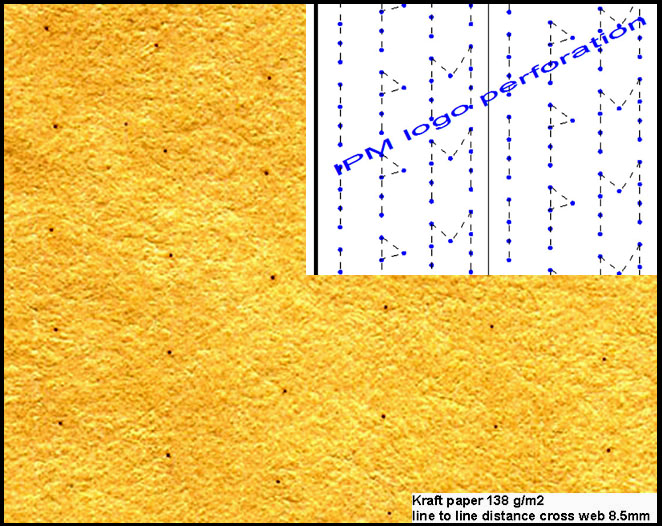
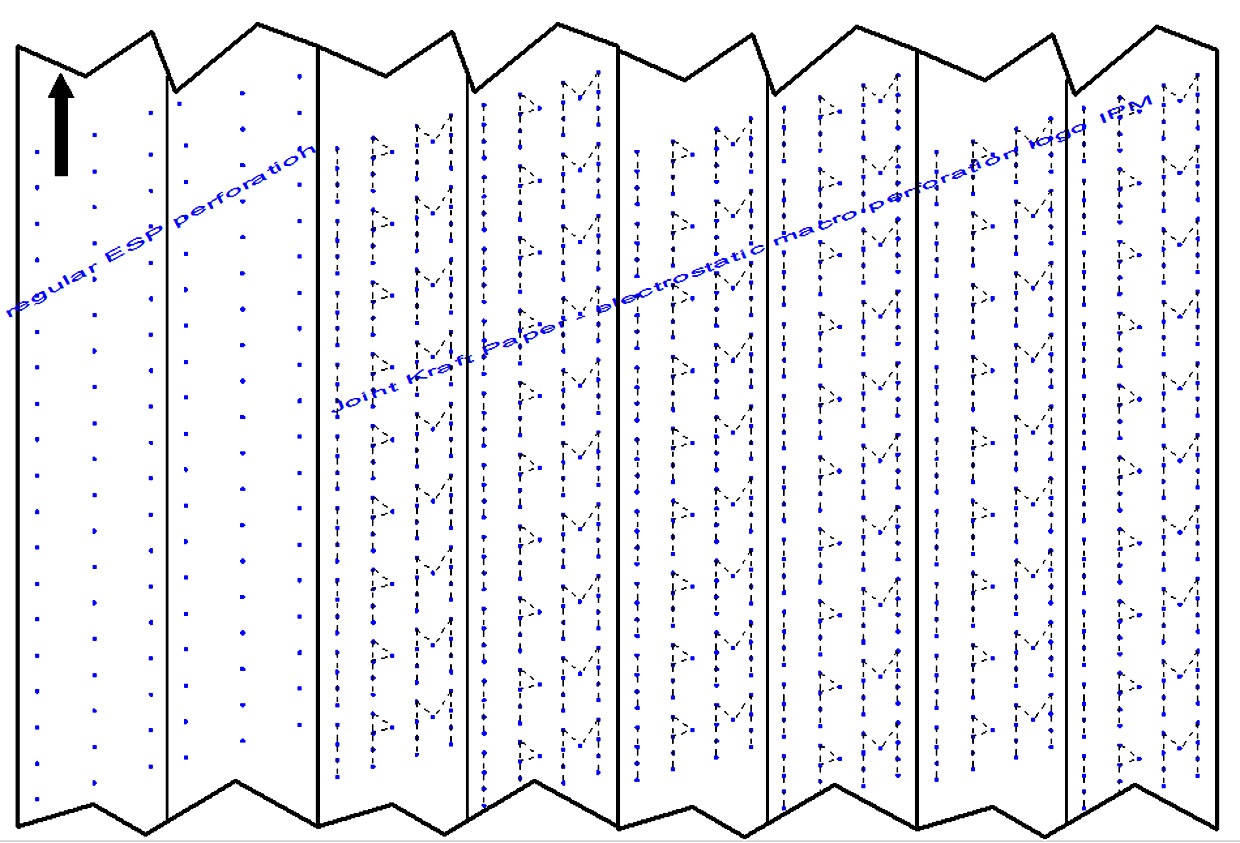
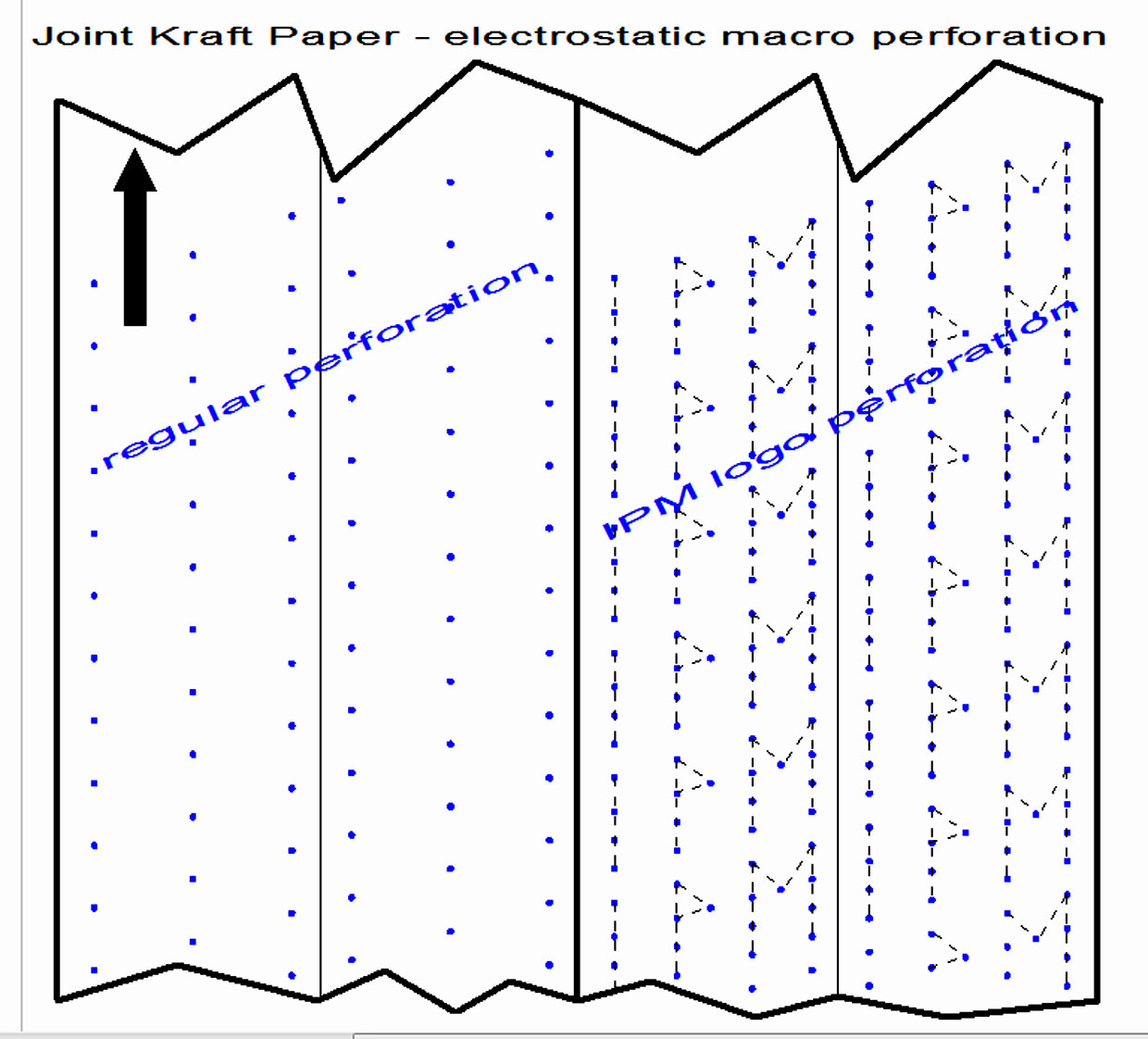
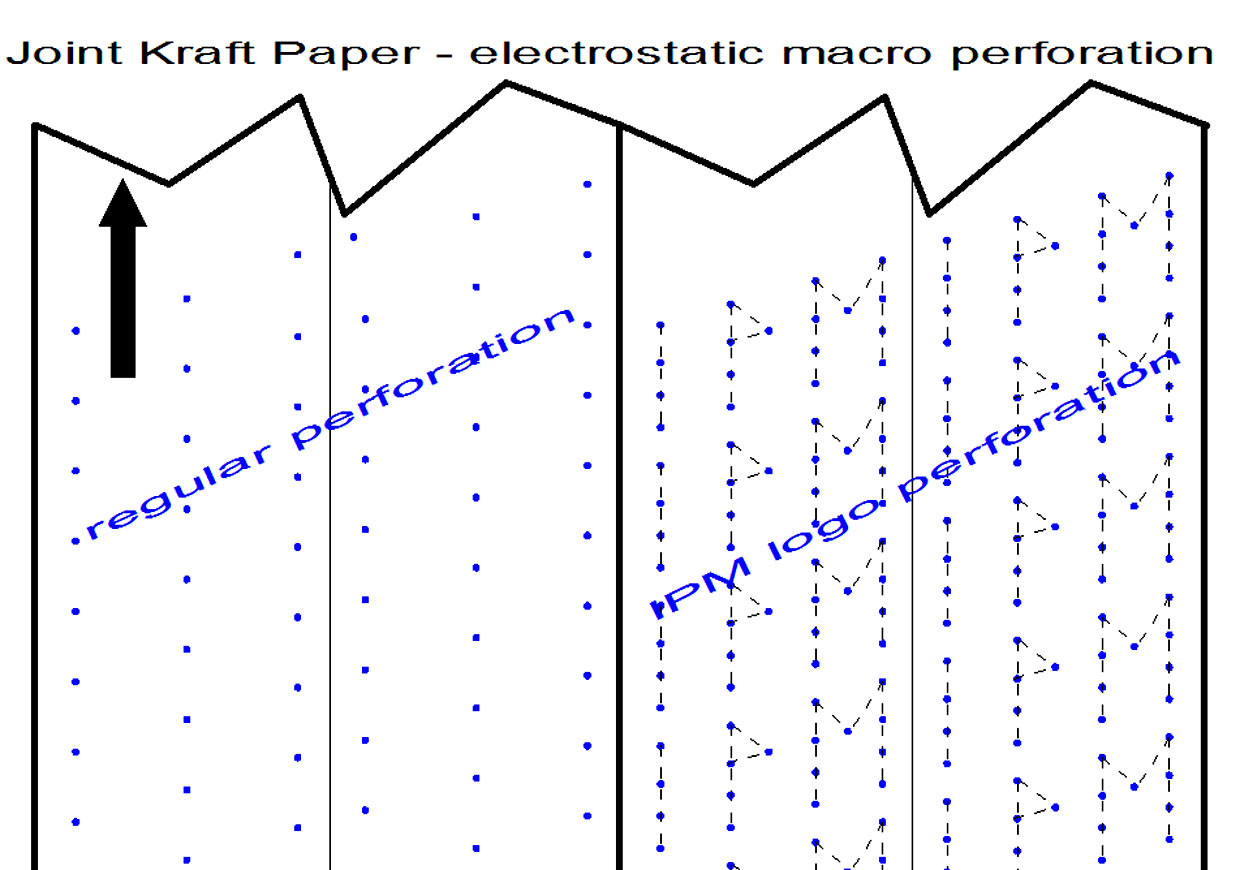
Produktanforderungen
Grundsatzforderungen für Produktapplikationen mit Verbundstoffen, Vliesstoffen oder Verpackungsbahnen welche Notwendigkeiten von Gas- oder Wasserdampfdurch- aber Wasserundurchlässigkeiten verbunden sind, fordern den Einsatz der elektrostatischen Nano Mikroperforation regelrecht heraus, da Wasser oder andere Flüssigkeiten die relativ kleinen Nano- oder Mikroporen von z.B. kleiner als 0.5 - 5 µm Durchmesser aufgrund der hydrophoben Oberfläche das Produktmaterial nicht penetrieren kann.
Diese und weitere physikalische Vorteile der kleinen Poren und hoher Dichte lassen ermöglichen einen vorteilhaften Industrieeinsatz, da Erfüllungen zur Atmungsforderung und Wasserdampfdurchlässigkeit z.B. nach den ASTM E96-80 oder E96-84 Messmethoden mit 100 – 800 g/m2/Tag mit Laserperforations- oder anderen Prozessverfahren nur äußert schwierig und technologisch aufwendig machbar, zu teuer, zu unwirtschaftlich oder bei derart hohen Lochdichten technologisch keinesfalls erreichbar sind.
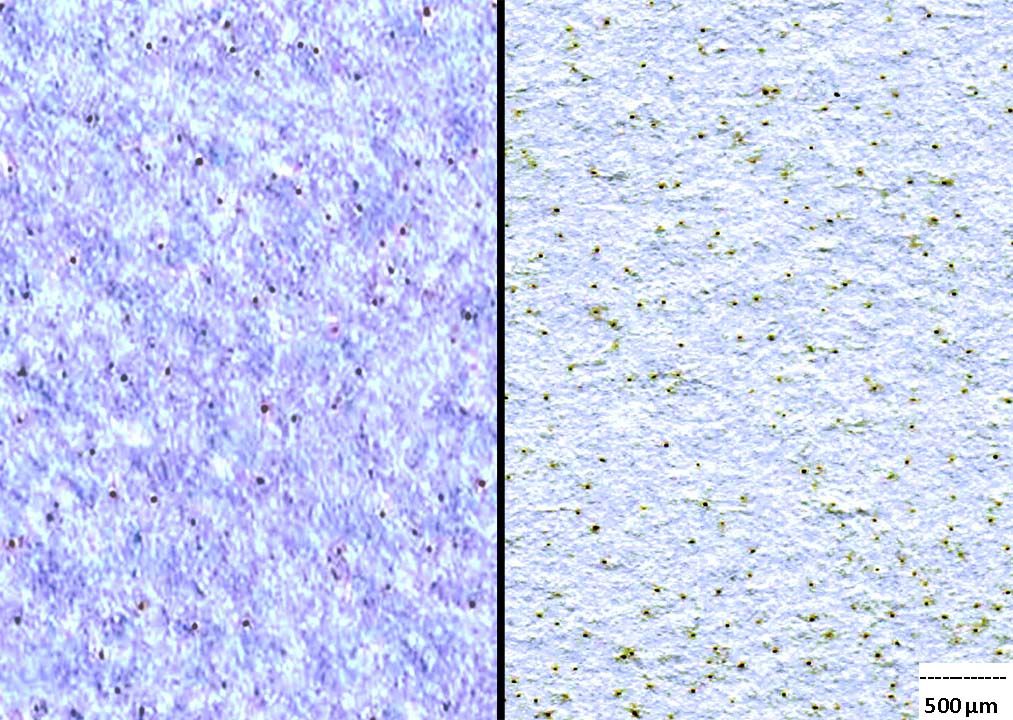
Anwendungen
Elektrostatisch Nano oder Mikro perforierte Verbundstoffe, Packmittel oder Folienverbunde verschiedenster Art lassen sich beispielhaft für folgende Produkte und Applikationen verwenden.
atmungsaktive Wanddekorationen mit Beschichtungen oder PVC Verbunden Wandtapeten, Vinyl, Dekore oder andere PE beschichtete Auflagen Fugen- oder Kantenbänder zum Verkleben von Gipsplatten für den Innenausbau Kanten- oder Eckenschutzkraftpapiere mit Luftblasendiffusion des aufgetragenen Klebers Vliesverbunde mit dünnen PE Schichten zum Außengebäudeschutz und Gasaustausch von Holzhäusern Unterdachspannbahnen aus Verbundmaterialien mit Gewebeeinlagen zum Gasaustausch zur Vermeidung von Kondenswasserbildung atmungsaktive Overalls oder Einmalberufskleidung aus dünnen PE Vliesen PE beschichtete Papiere für Füllgutsäcke, Granulate, Gipstüten, Zementsäcke, Tierfutter oder andere Verpackungseinheiten, die einen Luft Auslass zur vorteilhaften Befüllung oder Warengutbelüftung zur Lagerung benötigen Biotope, Gewässer mit Sauerstoffanreicherung Bekleidungseinlagen oder inlets mit atmungsaktiven, komfortablen Trageeigenschaften Seifen, Deo, Hygiene, Hautpflegemittel, Babypflege oder body care Produkte oder Verpackungsstoffe mit Duftstoffsuggerierung und Indikatoren als Marketinginstrumente Trage-, Gemüse- oder Blumenverpackungen aus Papier oder Papierersatzverbundstoffen mit Gasaustausch Brot-, Brötchen-, Früchte-, Lebensmittel oder Nahrungsmittel aus Papierverbundstoffen zur Erhaltung der Frische und Aromas technische Industrieverbundfolien oder Papierersatzmaterialien für industrielle, medizinische, biologische Filtrationszwecke Nanofiltration, Mikrofiltration, Nanomembrane, Mikromembrane, Batterieseparatoren Bioanalyse, Alkoholfiltration, Flüssigkeitsfiltration, Medizintechnik, Analysetechnik, Labortechnik, AgrarwirtschaftProduktvorteile
signifikante Reduktion von Sack- oder Beutelbefüllungszeiten um bis um 100 % attraktive Luftdurchsatzbereiche bei 200 - 500 C.U. oder 14 bis 3.5 Gurley unveränderter Außenschutz des Verpackungsproduktes Luft Auslass ohne Beeinträchtigung verpackter Produkte und deren Eigenschaften uneingeschränkte Erhaltung der Barriereeigenschaften Duftindikation und Suggestion für den Käufer ohne die Packung zuvor zu öffnen Atmungsaktivität von Wandtapeten oder Wandverkleidungen zur Vermeidung von Schimmelbildung und Fäulnis Brotpapierverpackungen zur längeren Haltbarkeit Aroma- und Frischeerhaltung, Haltbarkeitsverlängerung, Pflanzenabdeckungen Förderung und Verlangsamung von Wachstumsprozessen Gemüse, Früchte und andere Produktgeschmacksentwicklungen innerhalb der atmungsaktiven Außenhülle Atmungsaktivität und Tragkomfort von Bekleidungseinlagen oder inlets keine innere Schweißbildung bei Einwegbekleidung, Lackier- oder Kesselanzügen Unterdachspannbahnen zum Luftaustausch von Innen nach Außen zur Verhinderung von Tropfsteinhöhleneffekten Reinigungs- und Abscheidungsprozesse mit Membrantechniken Blutkörper, Partikel- und organische Filtration für medizinische, biotechnische und industrielle AnalysenPerforationsbeispiele Verpackungsbahnen
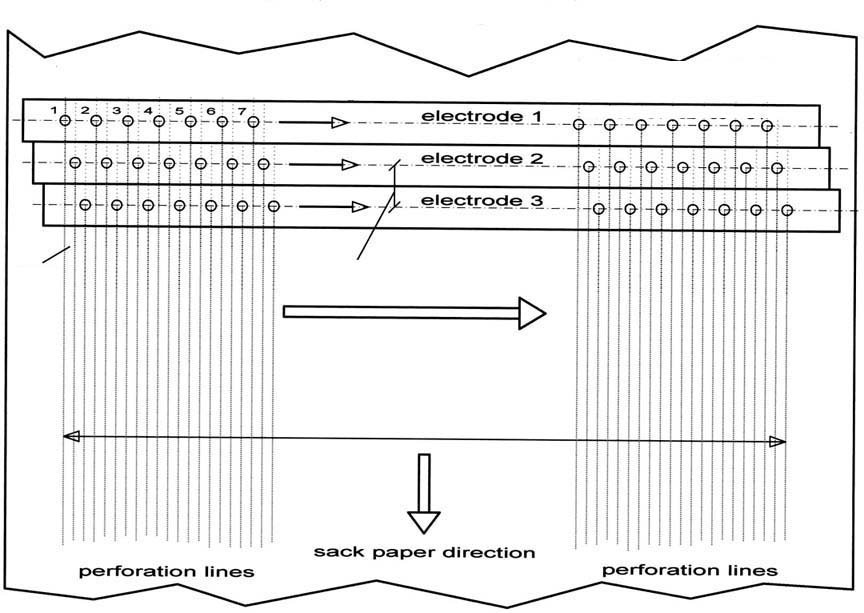
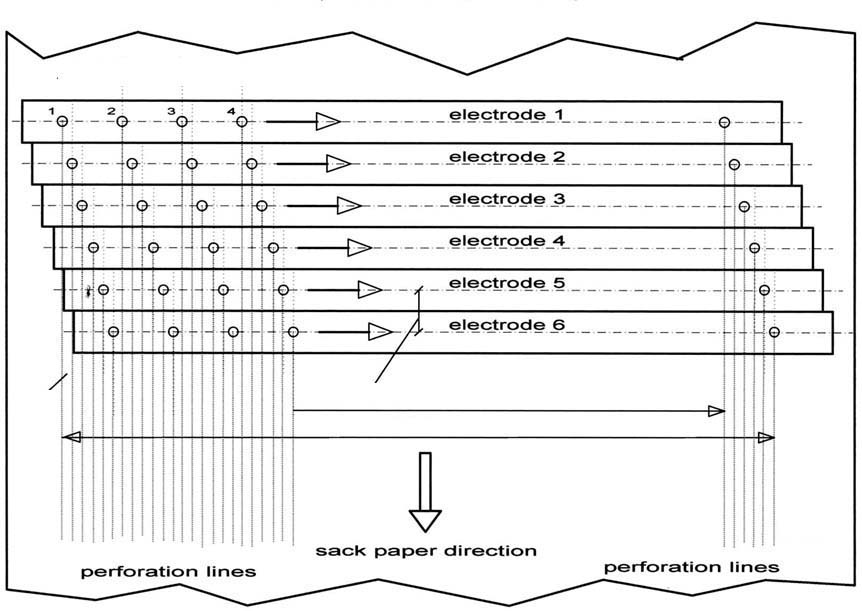
Berechnungen für Flächenperforationen
Grundformeln zur praktischen Auslegung einer Anlage
(1) Anzahl der Elektrodenpaare : INT ( Bahnbreite (m) / ( K-Ab * n-Stifte-E ))
(2) Porendichte : (Summe-Estifte * f ) / ( BB (m) * Vb (m/s) )
(3) Porenabstand in Laufrichtung : Vb (m/s) / f (1/s)
Formelzeichen
Berechnungsbeispiel
Bahnbreite = 1m, Bahngeschwindigkeit = 300 m/min = 5 m/Sek., f = 6000 Hz,
K-Ab = 0.8 mm ( min. Abstand in Querrichtung ), n-Stifte-E = 48
(1) = INT ( 1000 mm / ( 0.8 mm * 48 )) = 26 Elektrodenpaare
(2) = ( 48 * 26 * 6000 1/s ) / ( 1 m * 5 m/s ) = 1.497.600 Poren/m2
(3) = 5 m/s / 6000 1/s = 0.83 mm Porenabstand in Laufrichtung

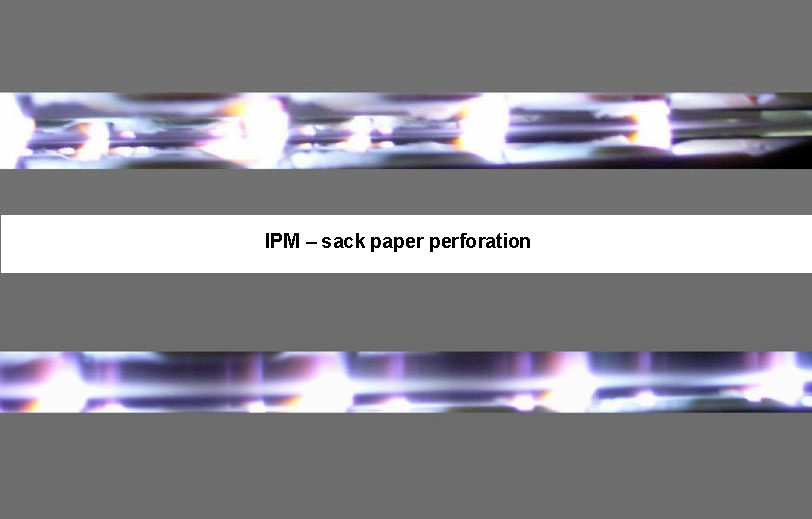
Zusammenfassung
Nur die elektrostatische Mikroperforation ermöglicht durch fein dosierte Energieeinkopplung und Funkenkanalerzeugung eine nano oder mikrofeine Ventilation für Packmittel mit erhaltenen Barriereeigenschaften, Schaffung von Atmungseigenschaften für Domestik- und Massenprodukte, industrielle oder medizinische Nano oder Mikromembranen mit Mikrocluster, Vliesstoffe und insbesondere Papierbahnen verschiedenster Art bei relativ großen Bahnbreiten und Transportgeschwindigkeiten, welche aus physikalischen oder prozesstechnischen Gründen nicht mit anderen Verfahrenstechniken erreichbar sind.
Dieser Trend wird sich für spezielle Produkteigenschaften und Anwendungen fortsetzen. Die state-of-the-art, industrietaugliche und im Dreischichtbetrieb zuverlässig arbeitende Nano Mikrocluster Perforationstechnik, deren Integrationsmöglichkeit in vorhandene Umroller- oder sonstige Bahnlauf- und Materialbewegungsanlagen sowie auch als völlig eigenständig arbeitende Produktionsmaschinen möglich sind, wird zukünftig neue Anwendungsbereiche erschließen und Produkte mit besonderen Eigenschaften entstehen lassen.
Durch Weiterentwicklungen von hybriden, modularen Schaltungstopologien mit IGBT, MOSFET, FRETFET oder HVFET zur Erzeugung stromgesteuerter Hochspannungsentladungsimpulse im Zeitfenster von 10 ns bis 15 µs und Pulsendladungen von 0.1 bis 3 mJ hat die Nanotechnologie und Submikroperforation auch im Bereich der Feinpapierveredelung und Verpackungsstoffverarbeitung Einzug gehalten. Auf die anderen zuvor genannte Applikationsbereiche ist dies für die beschriebene Mikroclustertechnologie übertragbar.
Traditionelle Kunststofffolien wie BOPP, LDPE, LLDPE, HDPE, MDPE, MAS, MEV, PET, FEP, PP, PE, PS, PO, EVA, PTFE, PVC, PTFE, DPC, BOPS, co-extrusions Folien, Vinyl, Polyester, Olefin, self-adhesive tape, adhesive coated Filme usw. lassen sich auch zukünftig weitere mit hot, cold oder Mikro needle oder anderen mechanisch kombinierten Verfahren perforieren.
Details igbt-esp-unit.html

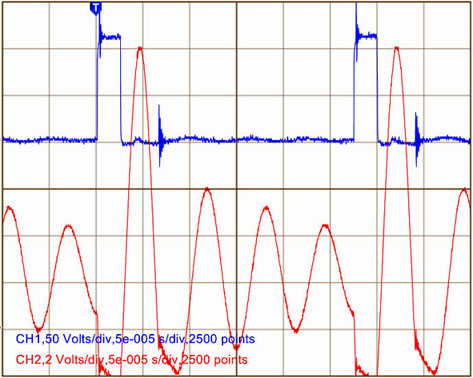
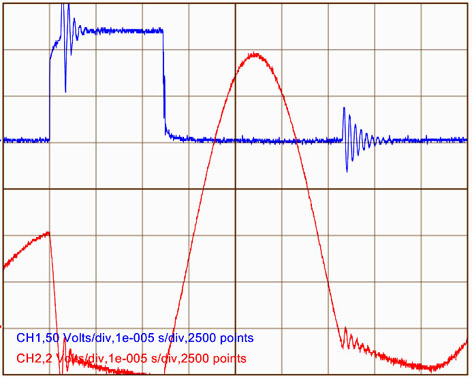
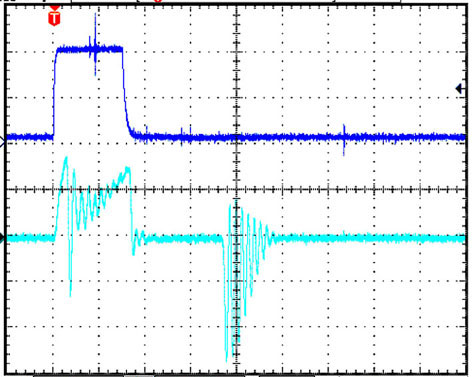
Kunststofffolien wie PE, PP, LDPE, BOPP, EVA HDPE lassen sich auch zukünftig besser mit hot oder micro needle oder anderen mechanischen sowie mit Gasendladungs- oder Festkörperlaser gesteuert perforieren. In diesem weiten Applikationsspektrum ist es denkbar auch dahingehend entwickelte, angepasste Laserperforationssysteme für Breitbahnen bis zu 2000 mm und Lochsequenzen über 3 Mil./Sek. einzusetzen.
Laserperforationstechnik
Durch Polygon um gelenkte oder gepulste, fokussierte Laserstrahlen bei vorzugsweise 10.6 µm Wellenlänge sind mit im internationalen Markt angebotenen Anlagen Lochgrößen von 60 µm - 200 μm bei Lochdichten von typischer Weise 10 – 30 Löcher/cm, Lochsequenzen von 100.000 bis 300.000 Löcher pro Sekunde, bei maximal 16 oder 32 Laserlochreihen über die Materialbreite verteilt, realisierbar.
Damit genierte Luftdurchlässigkeitsbereiche betragen 100 – 3000 C.U. bei Materialbreiten in der Regel von 100 – 500 mm bei relativ hohen Bewegungen bis 10 m/Sekunde, abhängig von verschiedenen Parametern.
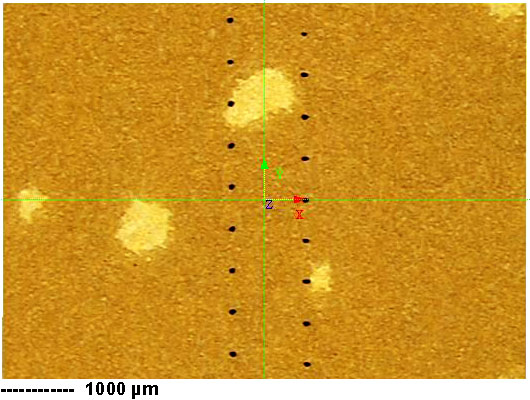
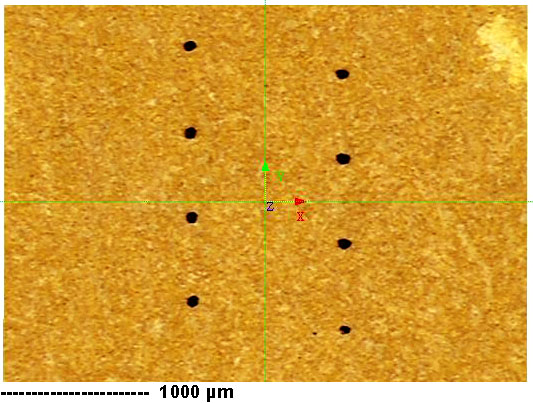
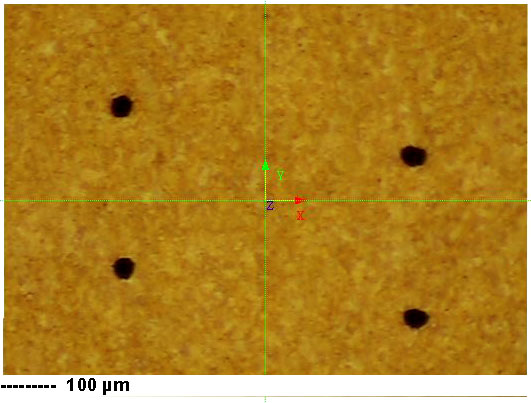
Laserperforationstechniken von IPM
Mit Entwicklung des patentierten IPM Dual Hochleistung Lasermultiplexers und optischen Eingangsleistungen bis zu 8 KW, bei fast oder slow flow sowie SLAB Laserquellen mit 10.6 μm oder auch anderen Wellenlängen, ist es erstmalig möglich, bis zu 200 separierte optische Laserstrahlausgänge zu realisieren, mit denen unter anderem auch Mikroperforationen und anderen Bearbeitungen wie Schneiden, Schweißen, Bohren, Abtragen, Trennen, Fügen, Vergüten, Polieren usw. in Breitformaten und Substraten bis zu 5000 mm machbar sind.
Dies sowohl in Kunststoffmaterialien, Folien, Papier wie auch in Stahl, Edelstahl, Aluminium, Keramik, Solarzellen, Glas, Kupfer, Messing, Gold, Silber, Silizium, Blei, Bronze, Druckguss, Werkzeugstählen, Holz usw.
Hierbei werden im auf zwei Ebenen aufgebauten optischen Dualmultiplexer mit hoch rotierenden Doppelstrahlteilern bis zu 200 Lasereinzelstrahlen erzeugt und über flexible Hohlfasern dem Bearbeitungsort zugeführt, deren exakte Positionierung ein automatisiertes Robotersystem und motorgesteuerte Mikro Fokussierung beinhaltet.
Bei diesem Lasermikroperforationssystem sind jetzt Lochsequenzen bis zu 2 Millionen pro Sekunde, Lochgrößen von 60 µm - 100 µm, Lochdichten von typisch 10 – 30 Löcher/cm, Porositäten von 100 - 1000 C.U., Geschwindigkeiten bis zu 400 m/min bei Materialbreiten bis 2000 mm machbar. Damit ist eine vorteilhafte Basis geschafft, um 25.000 Meter Jumbo Rollen an der Ab- und Aufwicklung non stopp zu veredeln, was 2000 – 3000 Tonnen/Jahr von Lasermikroperforierten Feinpapieren oder anderen Verpackungsverbundstoffen an der high-tech Automation geführten Produktionsmaschine LPM-1 bei geringen Papierausschuss von kleiner 1% mit Qualitätszertifizierung einer jeder Produktionsrolle ermöglicht.
Hierbei ist das patent angemeldete, optische online Permeabilität Prozessmesssystem OPSS-1 in traversierender Ausführung zur präzisen Positionskontrolle aller Laserperforationslinien sowie der moderaten Erfassung aller Porositätsprofile ein integraler Bestandteil der ISO Qualitätskontrolle und Datenauswertung zum Ende einer jeden Produktionsrolle.
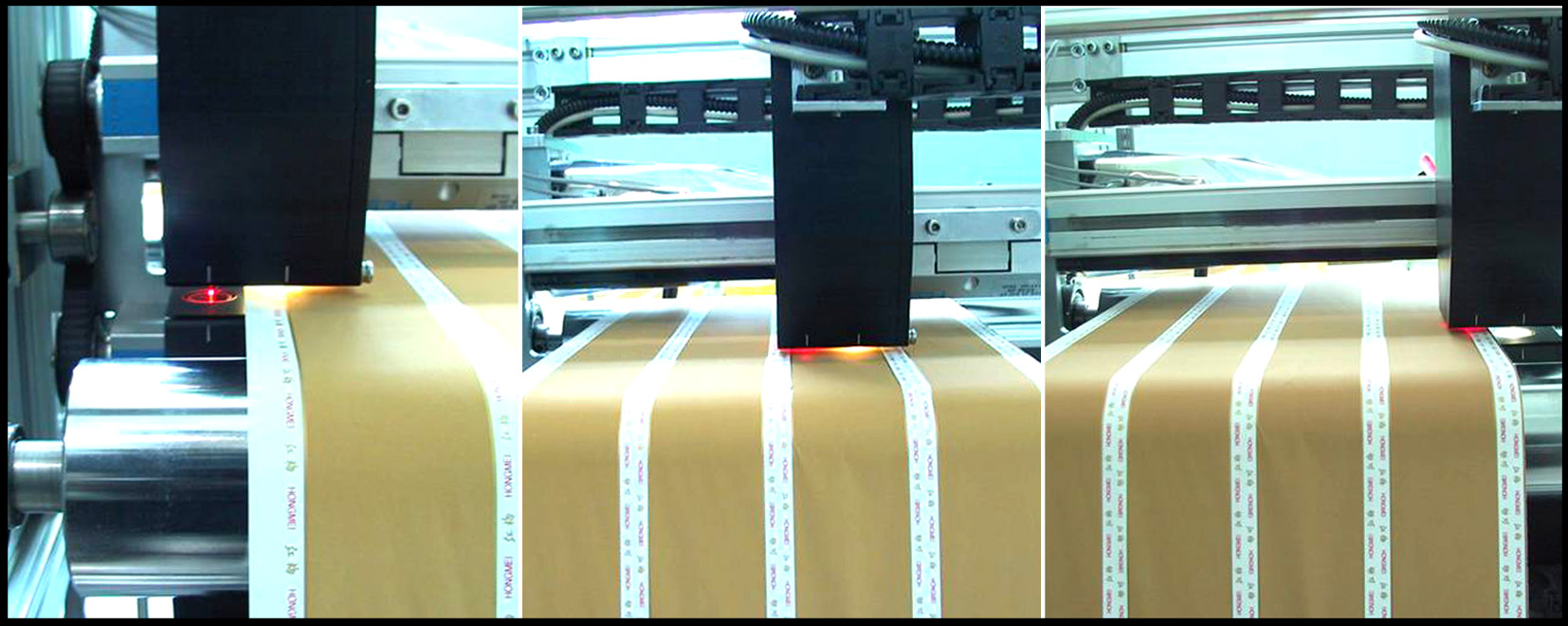
Eine weitere, zum patentangemeldete Entwicklung stellt die Mikro-Laser-Line Perforations- und Strahlauslenkungstechnologie MLL-1 dar, welche einen nicht geradlinigen Laserstrahlverlauf und damit verbundene Lochreihenanordnung auf Materialien ohne Galvanometer oder Piezo Aktuatoren bis zu 2000 Hz ausführt. Breite Anwendungen finden sich z.B. für Mundstückbelagpapierblättchen der Zigarettenfilter, RYO, MYO, usw. gegenüber den von seit mehr als zwei Jahrzehnten traditionell stets koaxial verlaufenden Laserperforationen.
In Sicherheitspapieren, Banknoten, Reisepässen, hochwertigen Geschäftsbriefbögen, graphische Papiere, Hologramme, Broschüren, Buchdeckeln, Geschenkkarten, Geschenkartikeln, Kundenkarten, ATM Kreditkarten, Zugangscodes, Kontrollkarten, Herstelleridentifikation, Produktverfolgung, OEM Garantie, Typenschilder, Deklarationen, Firmenpräsentationen und hundert anderen Plastikfolien, Kunststoffe oder metallischen Materialien lassen sich wellenförmige, Zickzack, Rechteck, Dreieck, gewundene Lochreihenlinien, Firmenlogos, Kryptogramme, Scripts, anti counterfeiting Indikatoren, Merkmale, Identifikationen oder andere beliebige Ausführungsformen als Oberflächengravuren, Materialritzungen, Materialabtragungen, Imbedding oder Mikroperforationen dauerhaft mit zeitlich sehr schnell, präzise aus gelenkten Laserstrahlen einbringen.
Für Lasermikroperforationen mit Co2 Laserquellen ist dies bei Lochgrößen von 60 µm - 120 µm, Lochdichten von typisch 10 – 30 Mikrolöchern/cm bei Lochsequenzen von 100.000 - 300.000 Löcher/Sek. und Permeabilitätsbereichen von 100 – 800 C.U. realisiert.
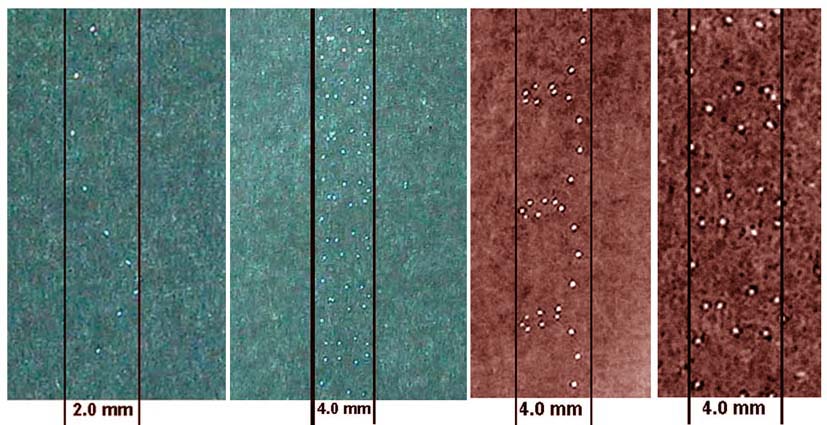
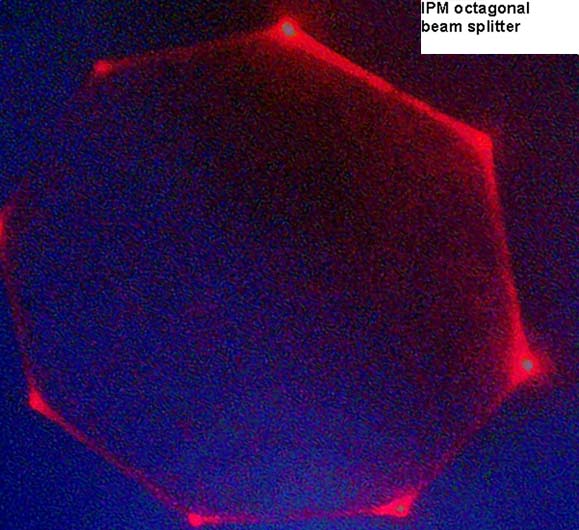
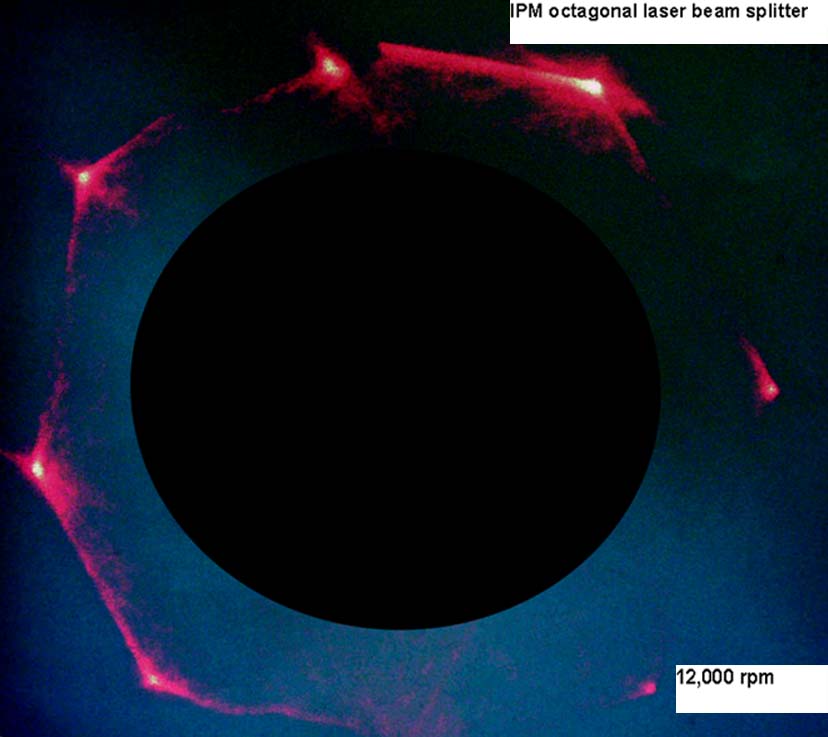
Perforation von Mundstückbelag oder Zigarettenpapierbahnen zur Ventilation von Filterzigaretten
Die ESP Perforation ist seit mehr als 25 Jahren zur Ventilation von Nichtfilter - oder Filterzigaretten eingesetzt, um einen gezielten und gesteuerten Luft Bypass, zu erzeugen. Hierzu wird das Zigarettenpapier für wenige Nichtfilter- oder bei fast allen Filterzigaretten das Mundstückbelagpapier elektrostatisch ESP offline Zonen, oder gleichermaßen offline mit Laserstrahlen zu Lochreihen oder mit Laser online direkt an der Filteransetzmaschine perforiert, um Schadstoffanteile wie Nikotin und Kondensate für die Raucher auf vorgegebene Werte zu reduzieren und den Ventilationsgrad der Zigaretten gesteuert zu beeinflussen.
Vor vielen Jahren hat IPM auch zur online Perforation an der Zigarettenherstellungsmaschine ein Verfahren entwickelt und seinerzeit unter der EP 0460369 sowie DE 4018209 zum Patent angemeldet, was das Einbringen von Perforationsprofilen über die Zigarettenlänge sowie in deren Umfang und an beliebigen Stellen des Zigarettenpapiers erlaubt.
http://www.freepatentsonline.com/EP0460369.html
Details online-perforation-cigarette.html
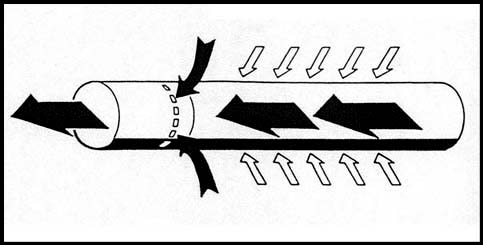
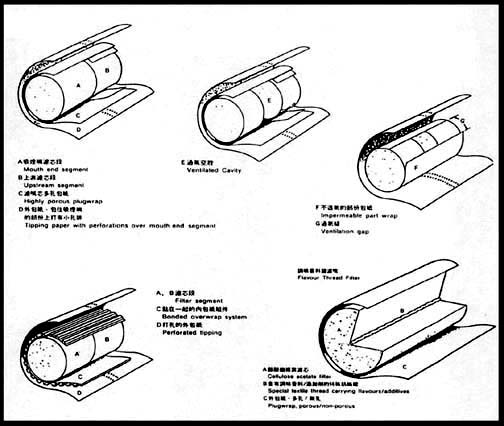
Optische online Porovision oder Porositätsmessung
Da die naturporösen oder zu perforierenden Bahnmaterialien sich mit
Bahngeschwindigkeiten bis zu 600 m/min und in Bahnbreiten bis zu 2000 mm
bewegen, gestaltet sich eine pneumatische, also bahn berührende
Porositätsmessung, exorbitant schwierig. Hinzukommend sind diese Messmethoden
mit Nachteilen der Bahnzugserhöhung, des Materialabriebs, Faltenbildung,
Undichtigkeit im Messkopfbereich, starken Verschmutzungen, Nichtlinearitäten
und Schwierigkeiten stets verbunden. Daher bieten sich optische Messverfahren
zur Transmissionsmessung als Funktion der pneumatisch, statischen
Gasdurchlässigkeit für naturporöse oder Nano, Mikro bzw. Makro perforierte
Bahnen an. Dabei sind die gestellten Anforderungen aufgrund der eingangs
genannten Produktverarbeitung und online Kontrolle, extrem kleinen
geometrischen Porenabmessungen, relativ hohen Bahngeschwindigkeiten und guter
Messwertreproduktion mit der optischen Porositätsmesstechnik in idealer Weise
zu lösen.
OPSS-1 optical on-line porovision control - download OPSS-1
Hierzu hat IPM eine Reihe neuer, patenangemeldeter optischer Messverfahren und Systeme in stationärer oder traversierender Ausführung als OPSS-1 und OPRL-1, entwickelt, weltweit im Markt eingeführt und mit der DE 10251610 sowie auch in China zur Patentanmeldung geführt.
Details http://www.microperforation.com/opss-1-optical-online-porosity.html
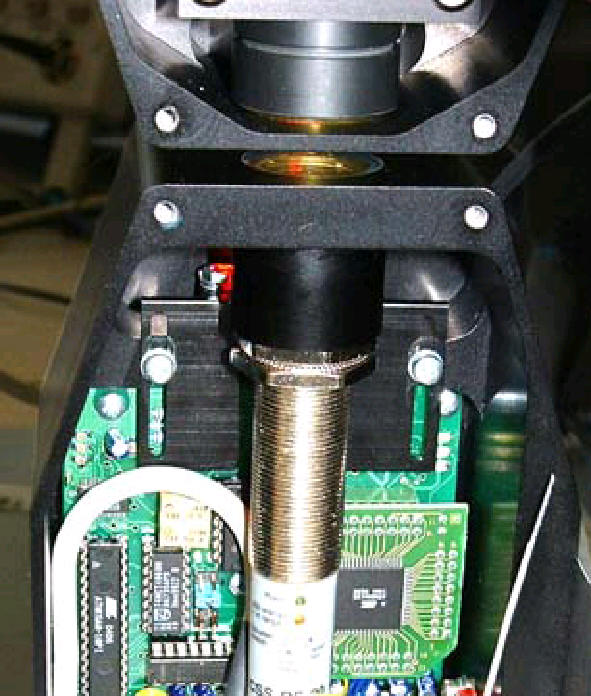

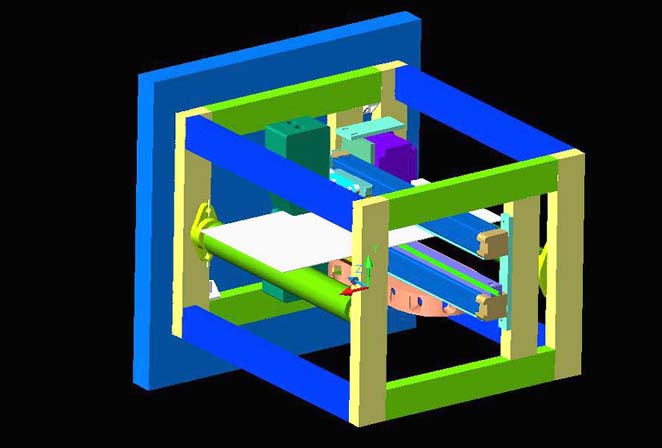
Porositätsmessbereiche von 80 C.U. bis 5000 C.U. mit Multicolor Sensoren, Perforationslochreihenerfassungen mit Auflösungen < 0.1 mm mit Präzisionslinienlaser, Scanning Speeds von 20 bis zum 300 mm/Sek., intelligente Multicontroller DSP Elektronik im Sensorkopf, high-speed RS-232 Link sowie Auswerteeinheiten sichern die qualitative, quantitative online Kontrolle nach ISO 9001/9002 an verschiedenen Produktionsmaschinen.
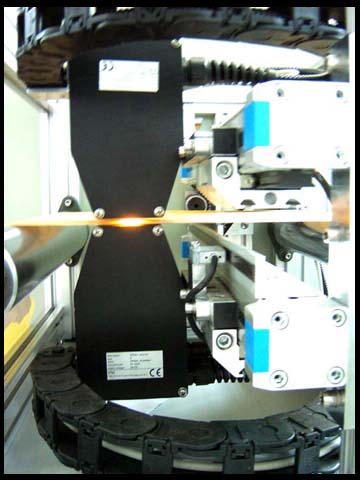
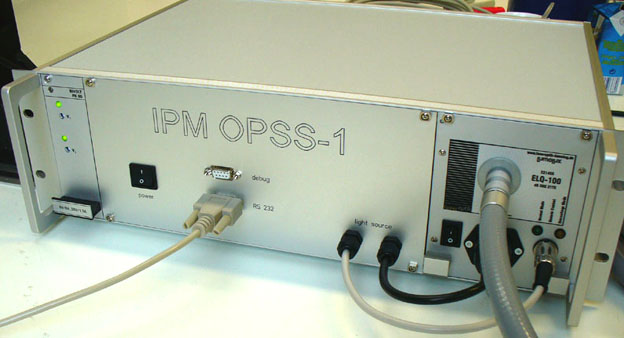
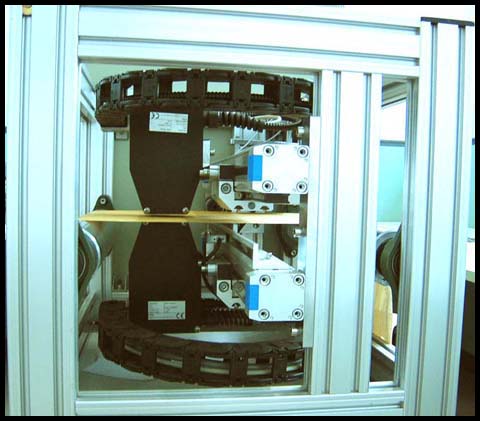
IPM – International Perforation Management – hat verschiedene laser- und elektrostatische Perforationsverfahren, insbesondere auch für neue Produkteigenschaften, entwickelt, deren Systeme und Produktionsmaschinen weltweit im Einsatz sind.
Zukunftsperspektiven Die elektrostatische ESP Nano- oder Mikroperforation findet vorzugsweise ihre Anwendung in Bereichen der Veredelung von Feinpapieren, Verpackungsbahnen, Vliesstoffen, Non-Woven, Filter-, Sack- oder Kraft- sowie Spezialpapiere verschiedenster Art, insbesondere bei der zusätzlichen Behandlung von Bahnmaterialien zur Erzielung besonderer Eigenschaften, welche aus physikalischen oder prozesstechnischen Gründen NICHT mit anderen Verfahrenstechniken erreichbar sind.Die state-of-the-art, industrietaugliche und im Dreischichtbetrieb zuverlässig arbeitende ESP Perforationstechnik, deren Integrationsmöglichkeit in vorhandene Umroller- oder sonstige Bahnlaufanlagen sowie auch als völlig eigenständig arbeitende Perforationsmaschinen möglich sind, wird zukünftig neue Anwendungsbereiche erschließen und Produkte mit besonderen Eigenschaften entstehen lassen.
OPSS-1-B Druckkontrolle mit hi-speed Kamerasystem an QUAD Bobienen Laserperforationsanlagen - download OPSS-1-B
Aktueller IPM Pressebeitrag : Micro-perforation of running webs
27.02.2008 - Flexo & Gravure Asia 1-2008 http://www.flexo.de/download/fga/1-2008/Inhalt_FGA_1_2008.pdf
Sophisticated, multi functional, optical online sensor systems
IPM has developed a number of new, patent pending, stationary, scanning optical control processes, devices and systems for fast moving webs or fabrics to detect very precise and reproduce their specified product properties in online operation during production.
Introduction
OPSS-1 OPRL-1 vision control systems are equipped with multiple IR, NIR, VIS monolithic spectral color sensors, precision line lasers, CCD imagine devices, DSP, ATMEL and INFINEON sensor internal controllers, own firmware, high speed data link, at scanning speeds from 20–500 mm per second, at web widths up to 5000 mm, measuring gaps from 2.0-5.0 mm, optical inline detection of permeability, porosity, spectral transmission, opacity, extinction, particle absorption, porosities ranges from 80 up to 5000 C.U. (Coresta), respective from 50 down to 3 Gurley, position control of micro perforation lines with 0.1 mm accuracy, nano micro pores from 50 nm up to 200 micron diameter by up to 300 pores per cm2. With real time data determining of certain parameters, optical transmission, spectral grades, porosity integrals, envelope curves, internal calculated measuring values.
Thus direct with close loops and feedbacks to the power electronics of fabrics treatment units. Micro perforation or other system makes it possible to compensate any changes in web treatment parameters and their partial locations so that each jumbo roll as well single, quad bobbin sets can be produced quantity and quality controlled without intermediate stops in order of ISO 9001/9002 certifications.
Thus sophisticate, precise, liable, repeat accuracy, easy visualized, optical online measurement techniques archives perfect ways to control and convert pneumatic, fluid, gas, jet streams, static permeability, naturally porous grades, filtration levels, breathable or ventilation effects, etc. at fast moving webs. Their conditions can be easily met by using optical transmission technology thanks to described processing in fully online stationary or scanning control units, extremely small pore dimensions, high fabric speeds up to 1000 m/min by high repetition rates. That completely independent from base material properties as consistency, coloring, density, formation, pin holes, smoothness, stretching, shrinking, brightness, opacity, optical spectral property, gauging thickness weight, moisture content and other known influences.
Applications
The electrostatic nano or micro perforation, including Co2 slab fiber yag excimer diode laser, other material going trough or surface treatment, as well for micromachining and nanotechnology, is usually used depending on quality at fine, rotogravure or offset printing, holographic or publishing paper, writing, magazine, newspaper, packaging, bonded fabrics, non-woven, filter, coffee, tea, bag, sack, craft, food, fresh fruit, force, reinforce, tipping, cigarette, plug wrap, fiber, facial tissues, toilet, decoration, wallpaper, gift, watermark, towels, bleached dyes shiny or clay, recycling, booklet, bible or other special paper, certain plastic films, foils, coating, laminating, extruding, Polyofine, Polysulfone, Elastomer, textile, Polymer or most of that varied types.
It is also used especially for additionally treating materials when aiming special characteristics by physical or regular process reasons cannot be achieved by other process technologies. Material base weights from 10 up 150 grams per m2 by thickness from 5 up to 100 micron are possible to use. Including defect inspection, process automation, moisture vapor transmission rate, abrasion resistance for lamination of waterproof and breathable fabrics.
Our state-of-the-art, industrially approved, sophisticated, compact, multi functional, optical online sensor scanning systems together or without electrostatic, laser perforation technology operates precise and reliable 24/7, are integrate able into existing rewinding, slitting, spooling, spreading, printing, labeling, complex production lines or other machines and other production processes as well. Also, they can be used as completely independent micro surface-all-over or zone perforation units. Fully new ranges of applications will be made available total new products with special features.
Specific information by website links and patent resources.
In-situ dyne surface tension control at running plastic films or other substrates
patent download http://www.microperforation.com/englishengineerreport.html
Patent application DE19543289
Dyn control
Described is a method and device for optical inline tough less surface
tension control ODSTM-1 by which the fast moving substrate runs through the
measuring gap. It’s transmitted with a chromatic beam and spectral selected
light source were two optical channels are displaced and polarized by 90 degree
to each other. Both optical axles are precise and motor driven shift able in
certain angles from 25 up to 65 degree. The spectral light photons, transmission,
extinction, absorption grades are detectable by two optical CCD imagine vision
devices which are integrate in the sensor case on the other side of the
substrate.
Material
Moving substrates means plastic foils, flexible, high-tech films, laminate, coating, bonding, labeling, co-extrusion, BOPP, LDPE, LLDPE, HDPE, MDPE, MAS, MEV, PET, FEP, PP, PE, PS, PO, EVA, PTFE, PVC, PTFE, DPC, BOPS, Vinyl, Polyester, Wrapping, Olefin, self-adhesive tape, high strength, cross-laminated, adhesive-coated films, reflective or magnetic sheeting, automotive tape products, inkjet media, Polyethylenex, heat sealing, sewing of plastic film, pressure sensitive tapes for the entertainment industry, graphic and specialty arts for general industrial and electrical applications, building or engineering industry, photographs, masking or printable plastic films, flat or corrugated rigid foamed thermoplastic sheets, polycarbonate, acrylic, PETG.
Extruded or polished cellulose, optical grade polycarbonate, sheets for IR or laser protection, welding filter grade sheets, films for video, imaging, capacitor or thermo transfer applications, foamed polypropylene film with decorative ribbons, binary-oriented polystyrene sheets, multi layer co-extruded film, high impact PVC and PETG, polyimide film, tape and flat films for aerospace automotive medical agriculture marine automotive household commercial domestic construction industry, municipal and leisure applications, clear matt semi-matt finishes or colored, micro-porous membranes for use in alkaline lithium batteries, fuel cells and filtration equipment. By gauges from 10µ to 100µ, fabric widths up to 10,000 mm and web speeds up to 18 meters per second.
Optical properties
Material specific wavelength selection between 1200-1800nm, material specific finger prints, molecular spectral properties, transmission grades, optical angle scanning, Lambert Beersche law determining, ultra low level stray scatter light detection, polarization, slot diaphragms, transverse displacements control the light beams along/far from the optical X and Y axes. The results are extreme scattering, diffraction, NIR, IR, stray light photons generation into the layer areas at both sides of the moving substrate.
Their reflected and transmitted light intensities enables the determination by defined formulas and data matrixes the surface tension values in ranges from 28-62mN/m which are direct associate and bond to real static values for Statistical Quality Control (SQC).
And this entirely independent of the material specific influences as like surface consistency, thickness, density, weight, opacity, coherence, filling, stretching, shrinkage, structure, co-extrusion, polar grouping, temperature, intrinsic motivation or viscosity, hydrophobia, hydrophilic molecules, hydrogen, photonics, mol mass, moisture, water steam proof, bi-layer, polymer, patterning, nanostructure, irradiation, isotopic, catalyst, multi atomic, coherence, absorption, photo mask effect, roentgen, X-ray, radiation, resonance bands, REM, TEM, FIC, IEC, ESCA electron spectroscopy for chemical analysis ASTM or ATR method, property, ellipsometry, opto-acoustic photonic liquid effects, pre material treatment as corona, plasma, flam treatment.
Specific information by website links and patent resources.
Perforationsmaschinen PS-1000 - PS-1200 - PS-1600
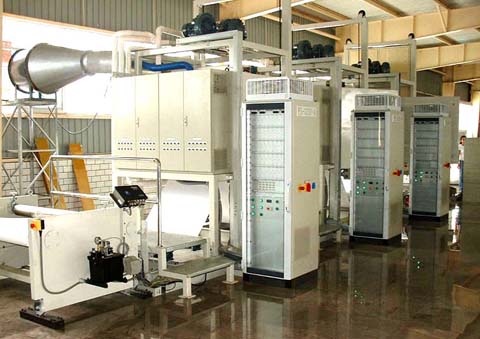
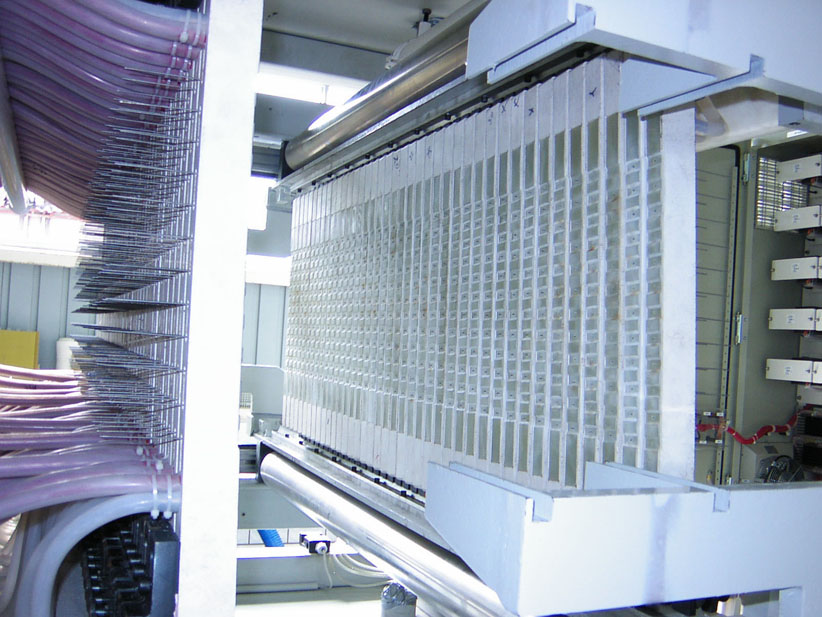
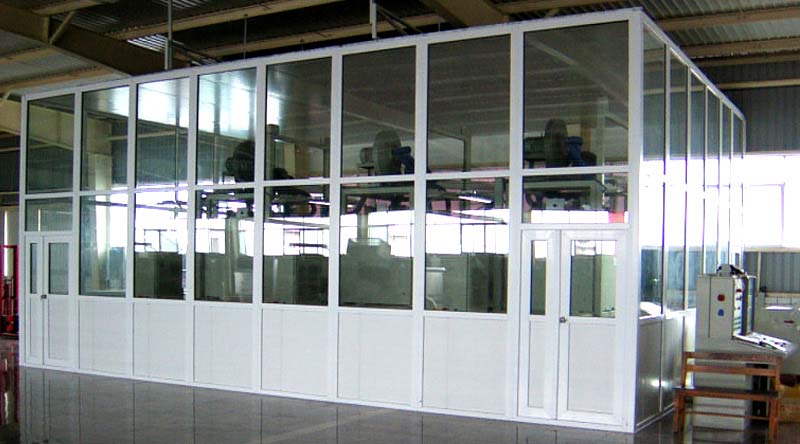
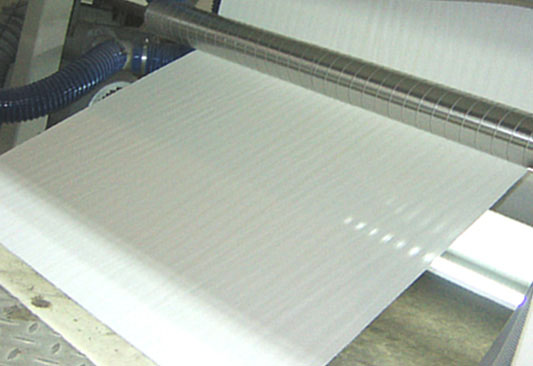
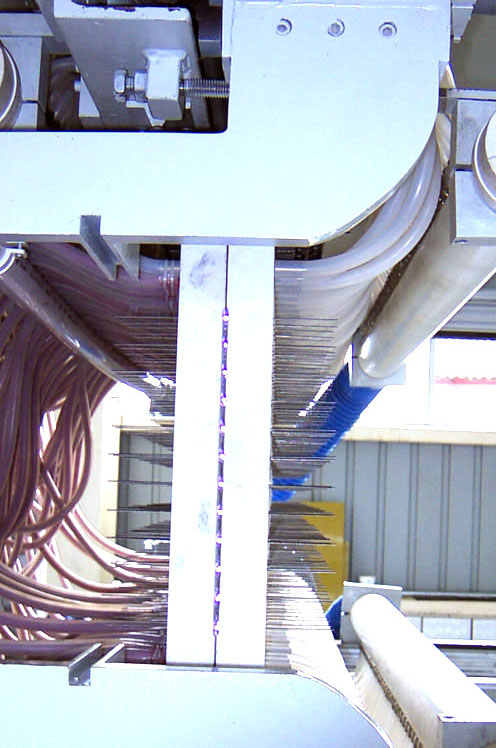
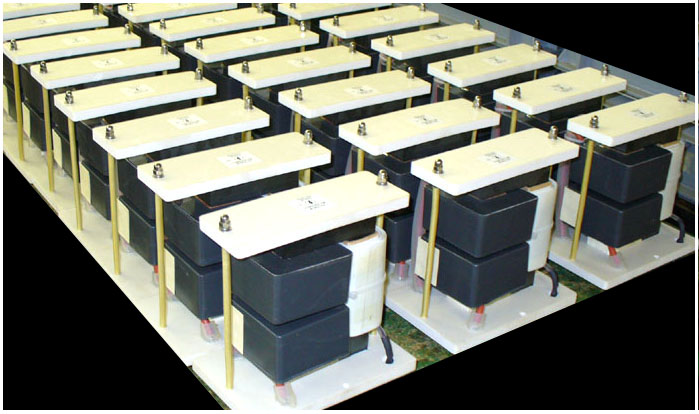
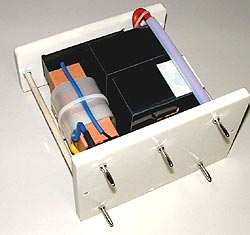
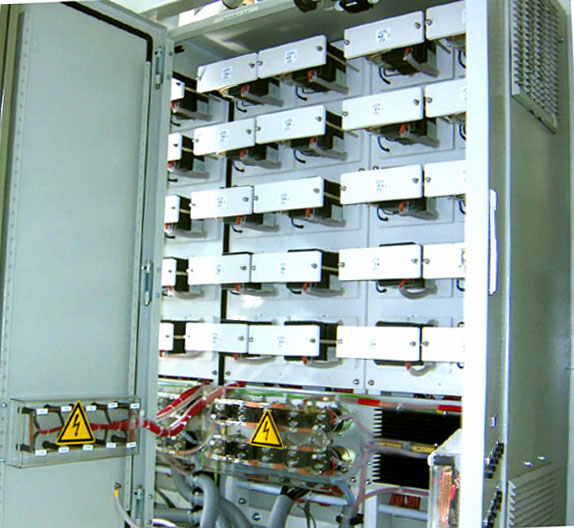
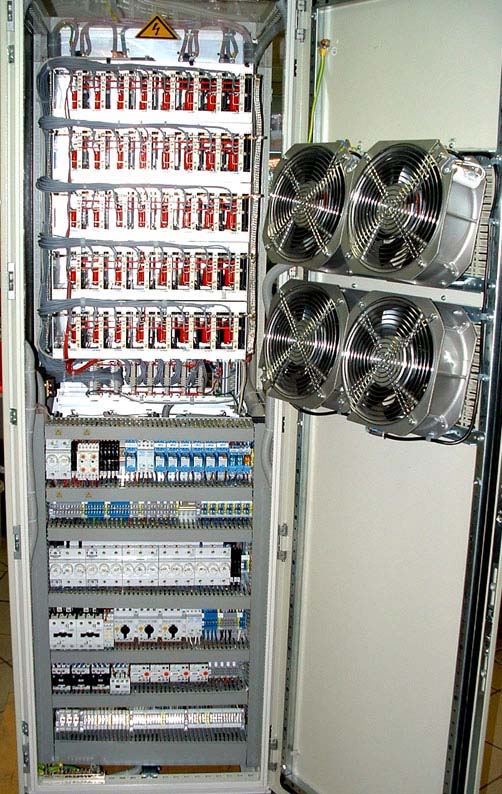
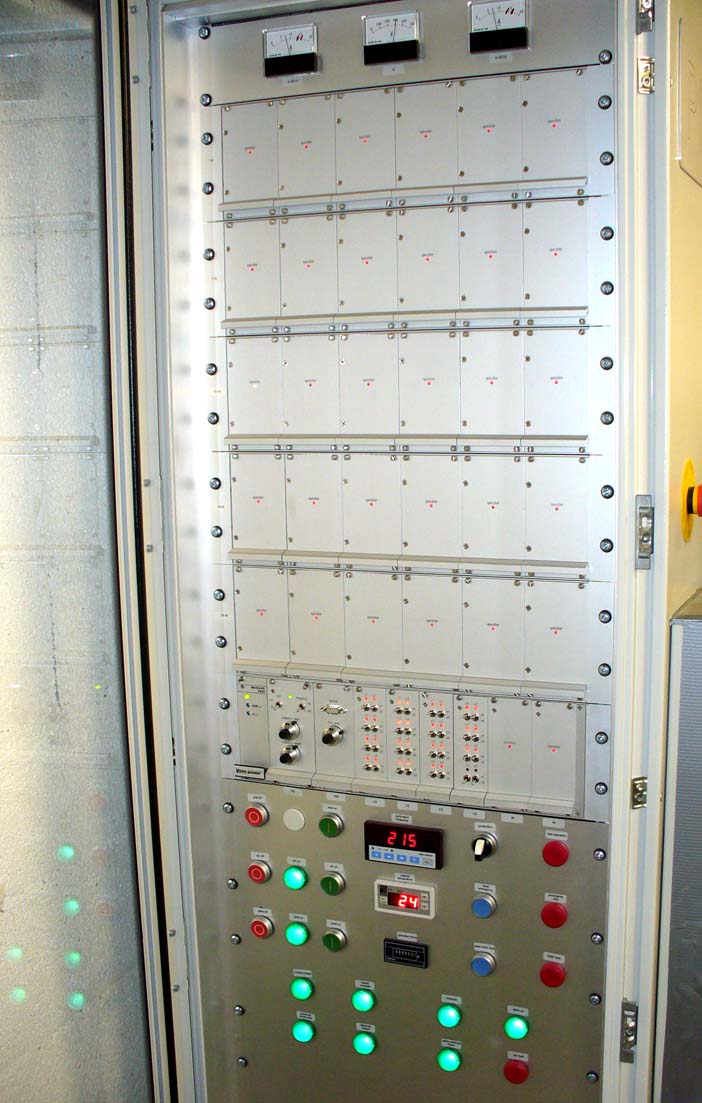
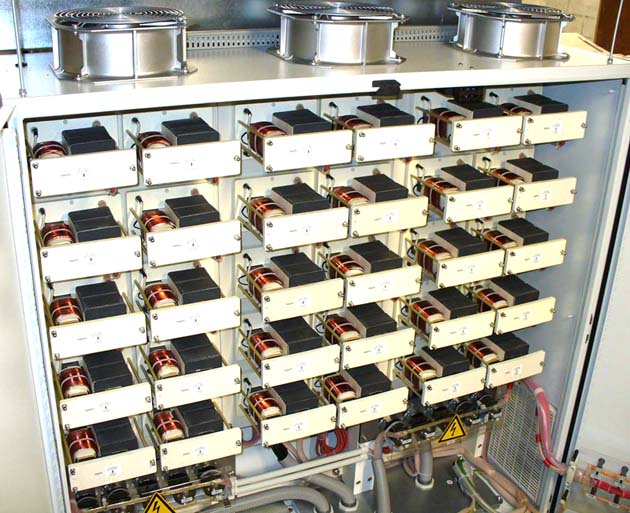

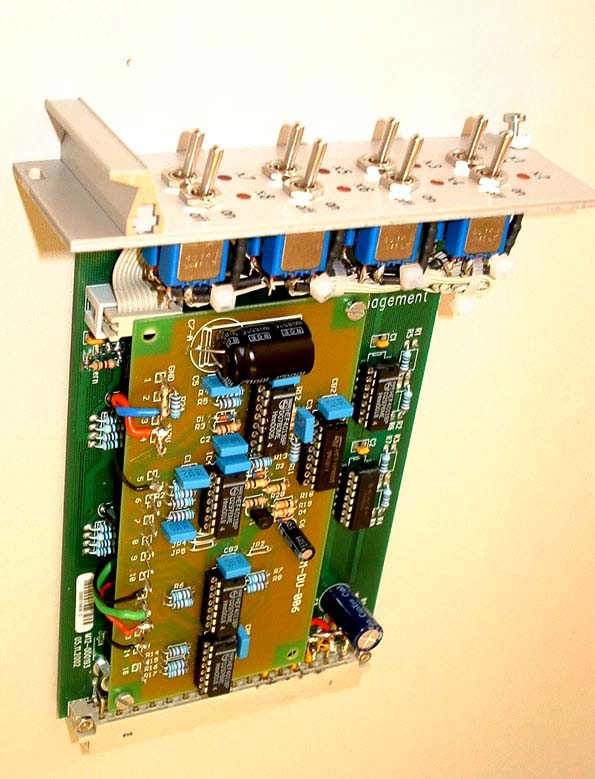
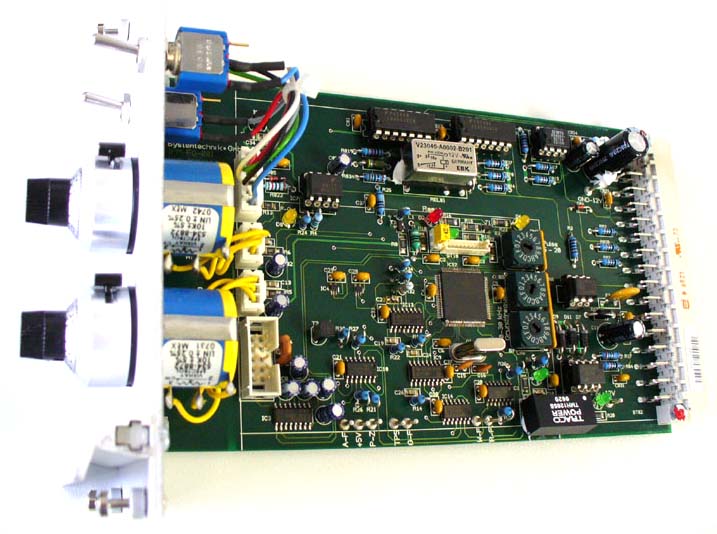
PS-1200 wide web perforation machine - download
PS-1200
Perforationsmaschine PS-250-4
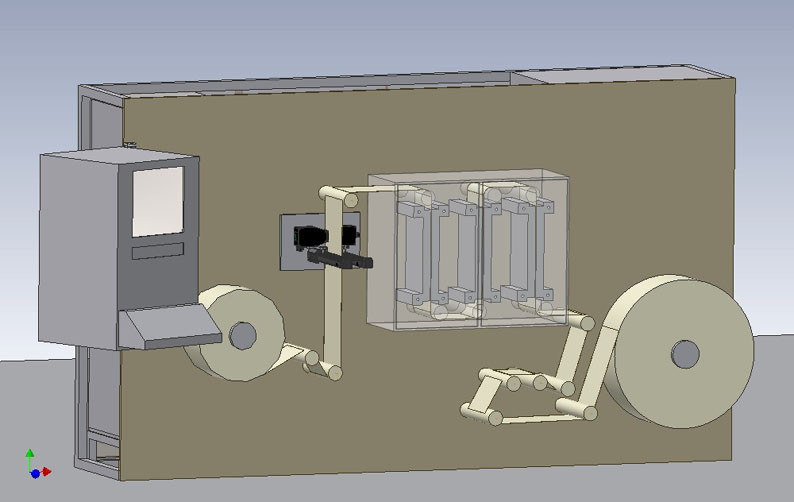
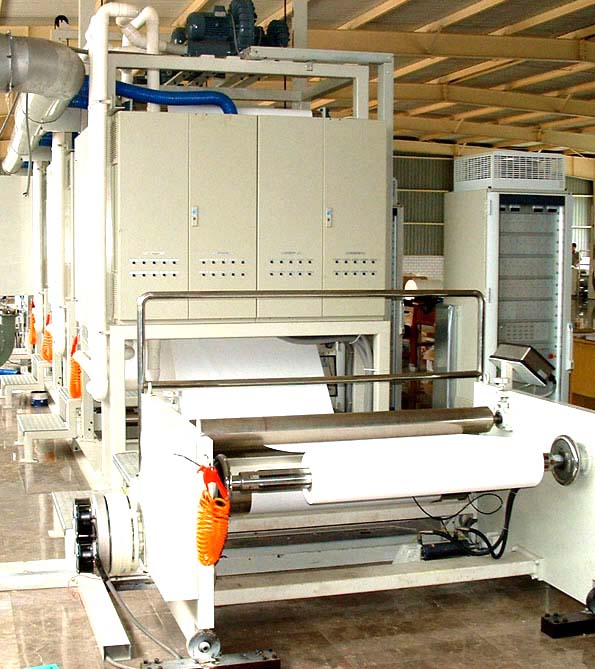
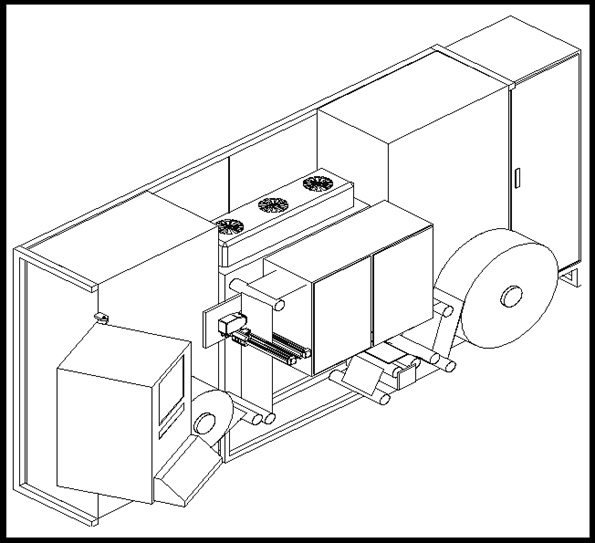
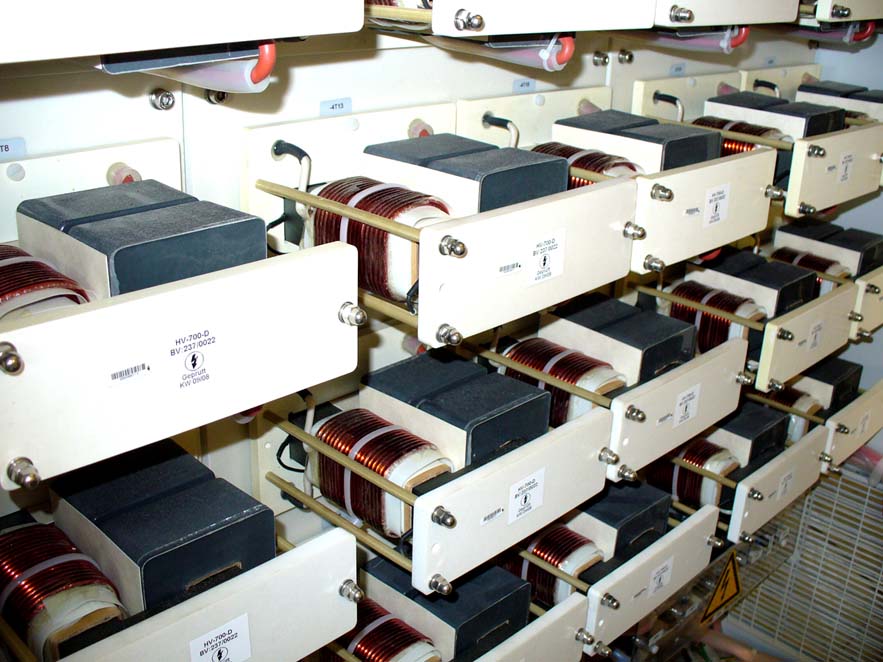

PS-250-4 Multi Bobienenperforationsmaschine - download PS-250-4
Electrostatic online and multiple perforation at cigarette making machines
Ventilation of mass products
Electrostatic perforation has been used since 30 years for ventilation of non filter, RYO or filter cigarettes to create a directed and guided air bypass or Lindstroem principle. For this purpose, cigarette paper for some non filter or RYO cigarettes and almost every kind of filter cigarettes tipping papers are perforated electro statically OFFLINE in zones from 2.0 – 6.0 mm width or in rows with ONLINE or OFFLINE by use of slow, fast flow, sealed-off or SLAB CO2 gas or diode laser in order to reduce the harmful substances such as nicotine and condensate down to allowed values. Another effect is the possibility to control the degree of ventilation of Cigarettes.


Online micro perforation – porosity profile
Many years ago IPM had developed a multiple online electrostatic micro perforation OESP-1 units at cigarette making machines which was patent applied with EP0460369 and DE4018209.
http://www.freepatentsonline.com/EP0460369.html
The method and the device for electro-erosive perforation of cigarette paper basically operates with at least two pairs of electrodes which are ignited at the same time in such a manner that each perforation section is treated twice in order to provide a corresponding intensity of perforation, taking into consideration the duration of ignition and the web speed. In particular, the invention operates with at least four pairs of electrodes (I to IV), between which the web (10) of cigarette paper to be perforated is moved through. The cigarette paper is moved in the longitudinal direction of the cigarette to be produced later, the width corresponding to the circumference of the cigarette plus an overlap section for bonding. Perforating is carried out transversely to the direction of movement, that is to say an accurately defined zone section is produced around the circumference of the cigarette. The pairs of electrodes are arranged at a distance which corresponds to half the cigarette length (a, b, c) when four pairs of electrodes are used.
The first and the third pair of electrodes are ignited simultaneously. A distance dependent control causes the second and fourth pair of electrodes also to be ignited simultaneously when the previously perforated sections have traveled the distance of half a cigarette length. Each section is perforated four times, the speed at which the web (10) can be moved being determined not by the spacing (half a cigarette length) of the pairs of electrodes but by the spacing of the pairs of electrodes in each case simultaneously ignited (one cigarette length). This provides for uniform, intensive and very powerful perforation and the cigarette paper treated can be continuously supplied to the cigarette machine for further processing in the longitudinal direction of the cigarette.
That electrostatic micro perforation process enables cigarette or tipping paper while cigarette making processes to reduce nicotine and condensate levels for non-filter and filter cigarettes as well. The OESP-1 devices opens fully new possibilities for cigarette or tipping paper ventilation during cigarette manufacturing by entire perforation cassettes integration into cigarette making machines as Max-S, Protos 80, Protos 90, Mark-9 etc.
Advantages during manufacturing
Compact all-over-dimensions, direct mechanical integration of perforation units, easy functional interfacing and full EMI acceptance in order of EN or NEC standards archiving high production efficiencies with controllable ventilation grades on highly automated cigarette making machines.


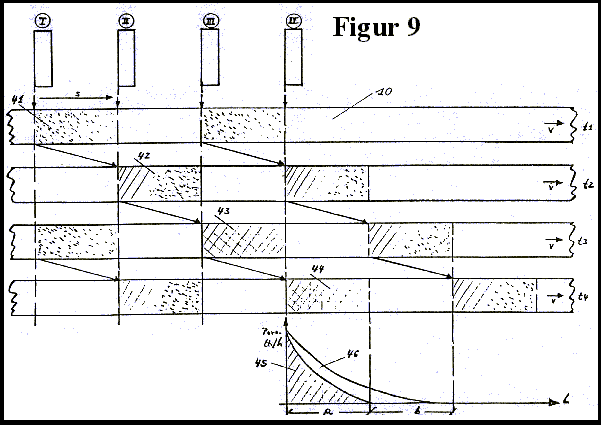
Liability and system investment
The ESP process OESP-1 has a high liability and is realizable with low investments and low running costs when compared with online macro or micro laser perforation processes. An online porosity control system OPSS-1 monitor continuously the air permeability, called optical online porovision or porosimeter, with a state-of-the-art technology to obtain a close-loop/feed-back to the perforation unit to keep ventilation grades constant.
Conclusion: Online micro perforation processes are possible to use for other mass products and application fields with full system integration in entire production lines as bag, sack, packaging manufacturing etc.
more details http://www.microperforation.com/online-perforation-cigarette.html
IPM - ONLINE LASER PERFORATION with patent grant high-speed multiplexer DE102004001327
A – laser source and IPM patent grand multiplexer with 8 optical channels
B – bobbin unwinder and perforation heads
C – tipping paper strips with 8 laser perforation lines
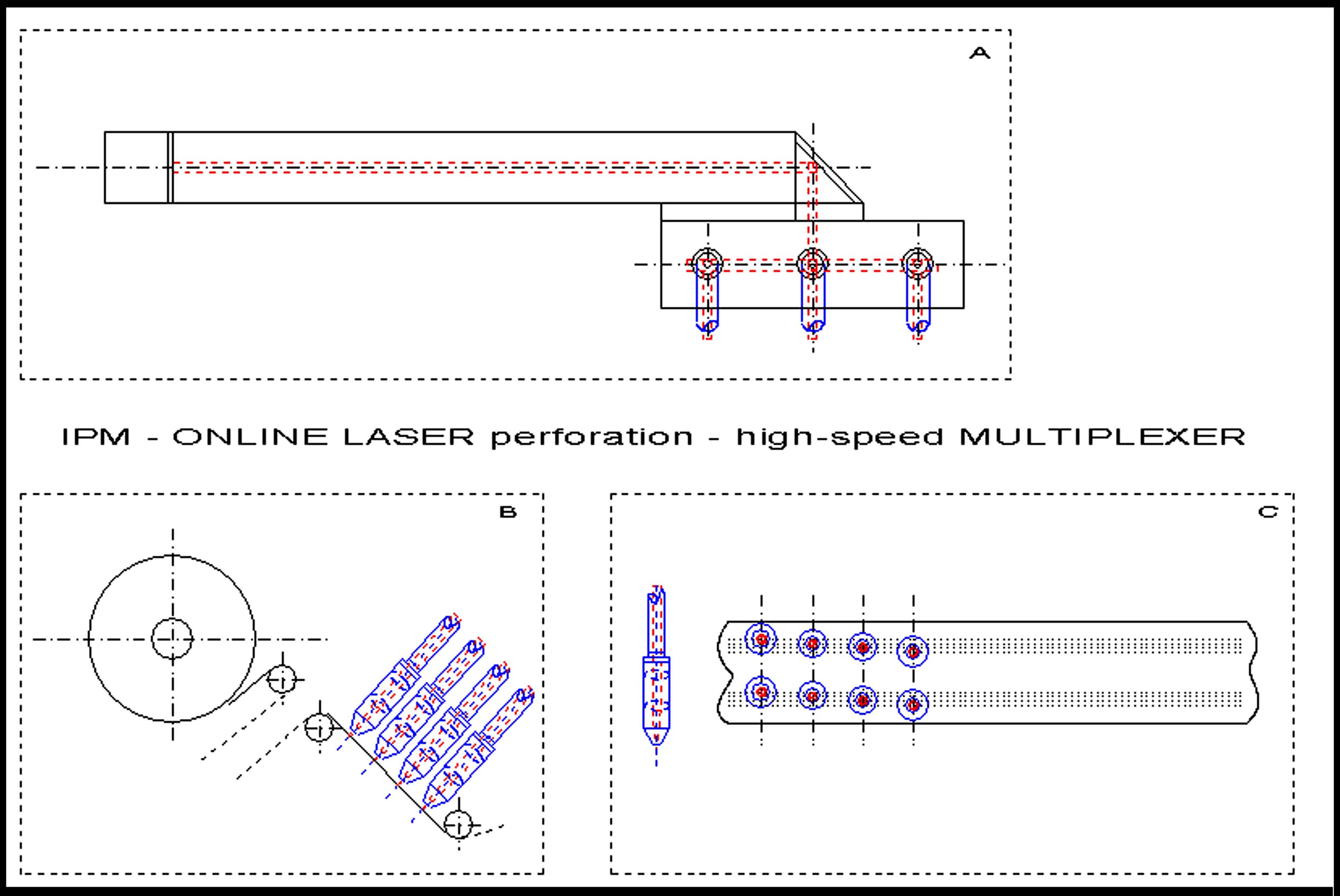
further information on request
Compact all-over-dimensions, direct mechanical integration of perforation units, easy functional interfacing and full EMI acceptance in order of EN or NEC standards archiving high production efficiencies with controllable ventilation grades on highly automated cigarette making machines.
Nano Micro Laser Perforation
High power laser multiplexer for many industry applications as well for wide web micro perforation machines LPM-1 with tipping, packaging paper, non-woven, spun-bonded, textile, plastic films or other material substrates
Patent grant DE102004001327
Introduction
A German-Thai-Chinese high-tech engineering company offers completely new possibilities with high power CO2 laser multiplexers for wide web applications as well for micro perforation with JUMBO-ROLLS with up to 200 individual laser perforations rows, automatic laser perforation head positioning, focus setting, web speeds up to 400 m/min, web widths up to 2000 mm and more. Several types of material web, e.g. paper, packaging, coated sheets, films, foils, metal sheets and other types of substrates can be micro perforate or treated. We are seeking for R&D, science or industrial partners in licence agreement, technical cooperation, new product or applications in USA and EU.
Working principle of high-power laser multiplexer
Through 2/4 KW dual laser beam sources, two or four level high-power laser multiplexers designed for certain wave lengths from 500 nm up to 10.6 µm, new two level rotary cubic elements, or two quadruple beam splitters or polygons bent facets, using of new developed CO2 hollow waveguide fibres realizable up to 200 optical single channels with assembled focus heads direct on the production web material. Without very extravagant, expensive of optical elements, alignments, lenses, divert mirrors, extended mechanical design, etc.
Pulses sequences up to 4,000,000 per second, single shoots between 0.5 up 3.0 mJ, time windows from 1 µs up to 100 µs and e.g. holes sizes from 1 µm up to 100 µm or microns are possible.
Description for wide web micro laser perforation
Wide web laser perforation processes, equipment and machines permits e.g. tipping or packaging paper web width up to 2000 mm and more, up to 200 single laser rows across the web by holes sequences up to 4,000,000 per second. Depends of material consistence, perforability, holes sizes and densities web speeds up to 400 m/min, web widths up to 2000 mm, 25,000 meter roll-by-roll, automatic perforation head positioning and focus control, up to 20 bobbins in one cut which means up to 160 bobbins are now archive able without machine downtime. In addition the key element and integrated OPSS-1 porosity/position scanning system complete the feed-back and robot control system. The optical online multi sensor porosity/position control system OPSS-1 is located just behind the laser perforation section and rewind stand to control the perforated material web continuously and supply the data stream to the master PC and close loop.
Highly automated and motor adjustable focusing optics one each perforation heads are free position able across the material webs. That automatic procedure and their robot devices open now fully new ways in wide web laser perforations or other material treatments in high speeds ranges, large number of optical single channels and high pulses or holes sequences.
In addition with the optical online control systems OPSS-1 porosity, hole qualities and all hole row positions are continuously controlled and differences immediately compensate over master PC controlled feedbacks to the perforation system. Production rolls and products are finished without intermediate stops in high qualities and large quantities.
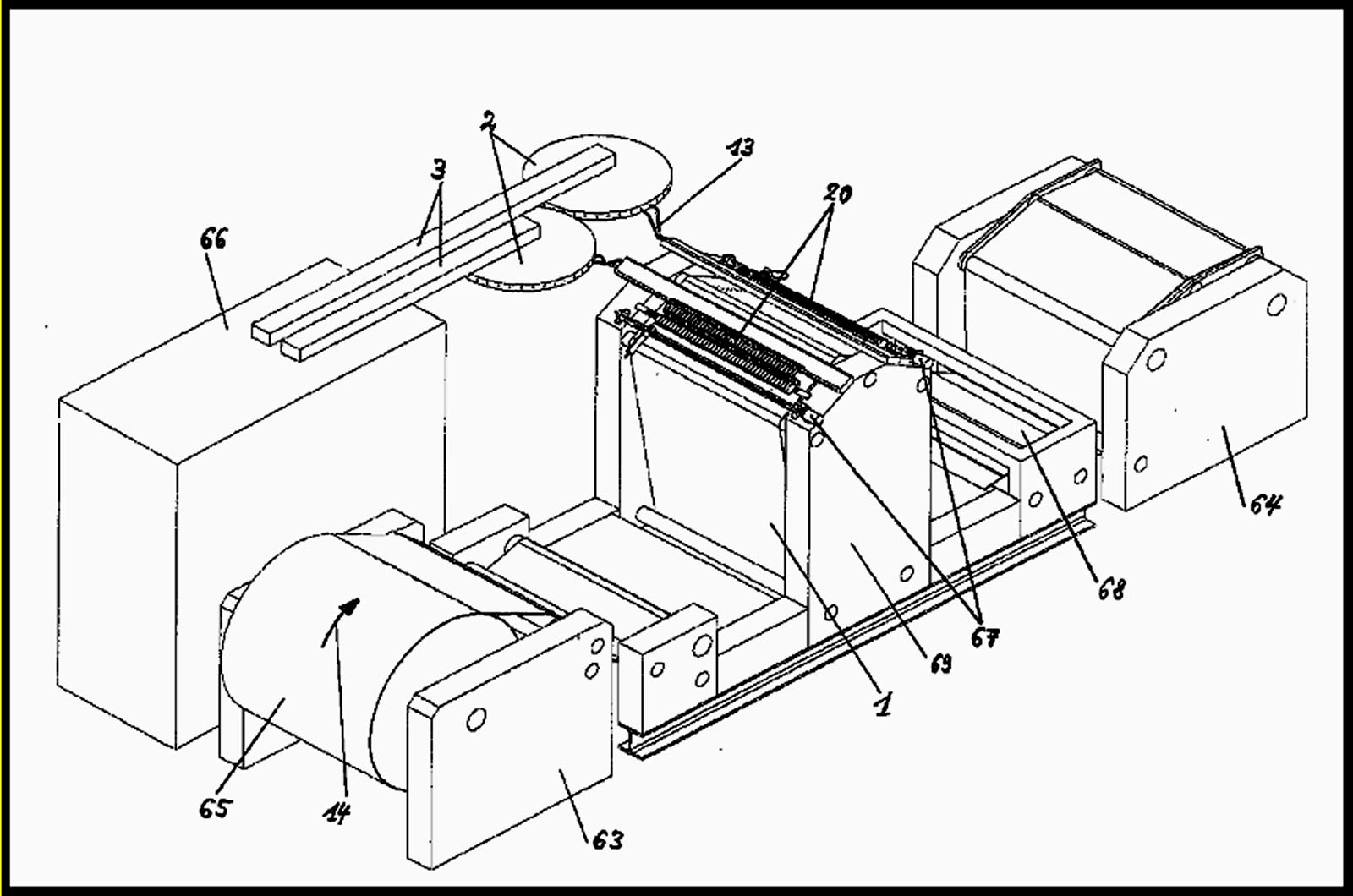
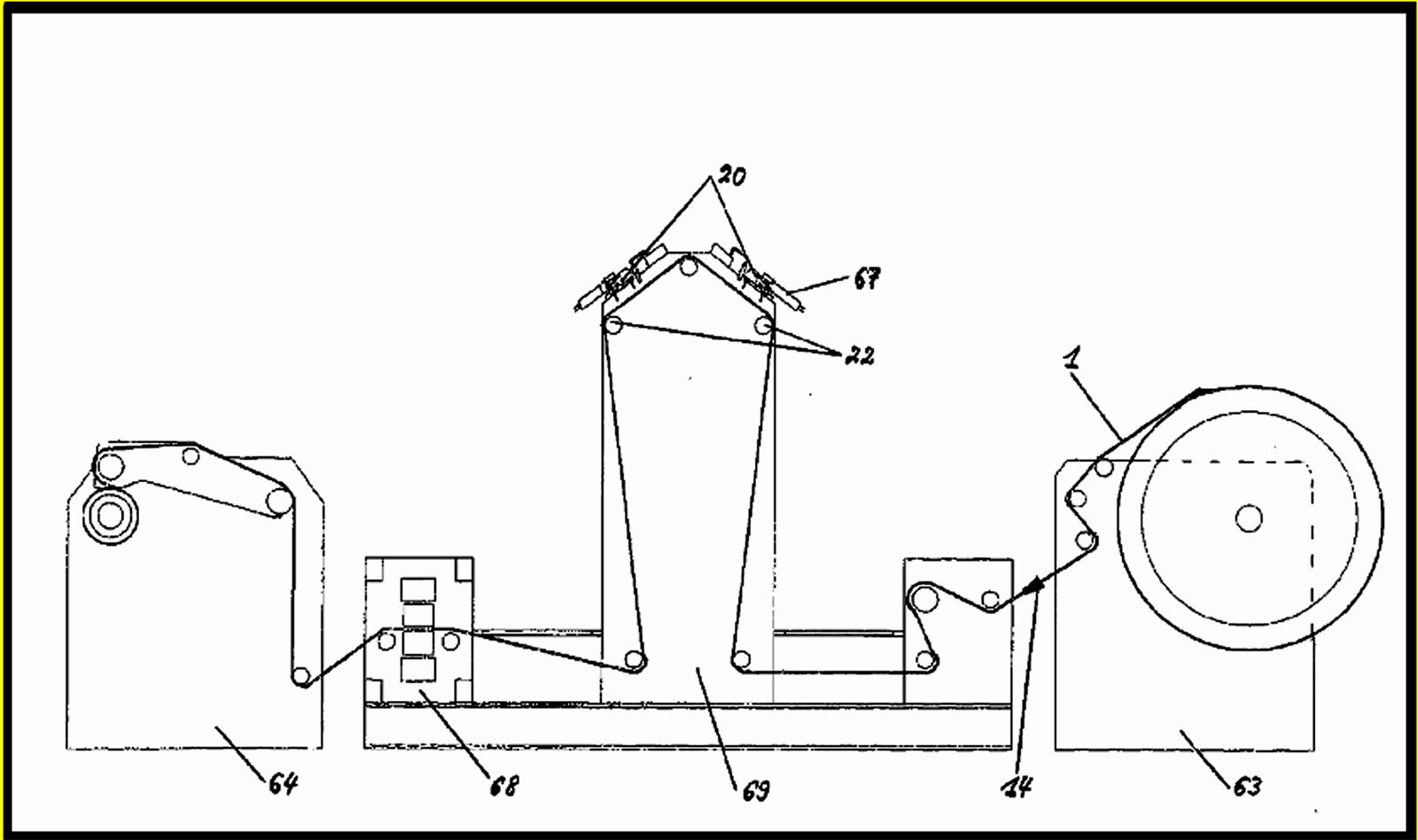
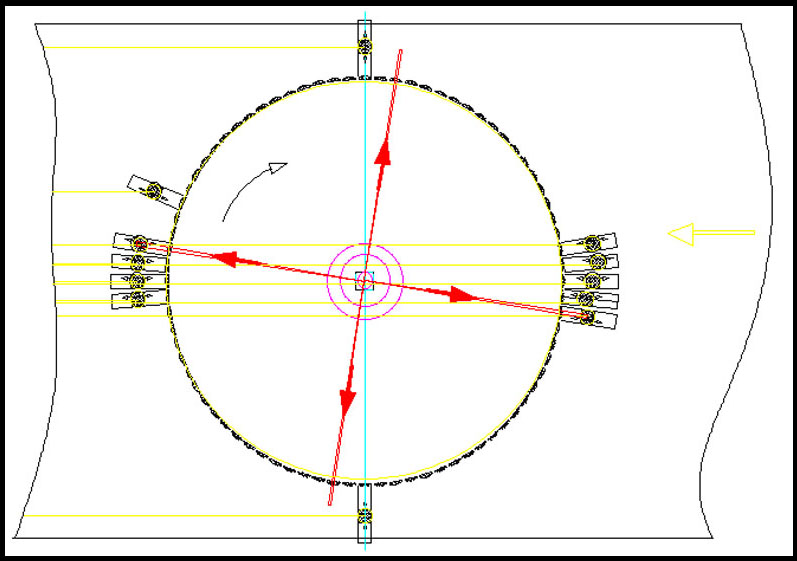
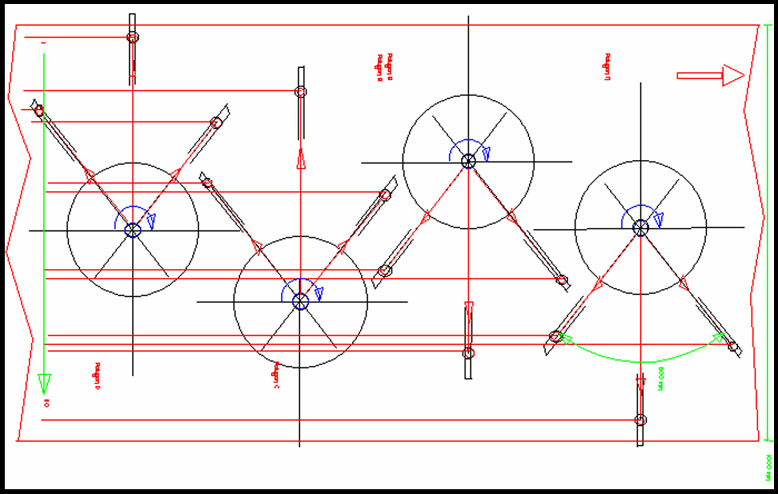
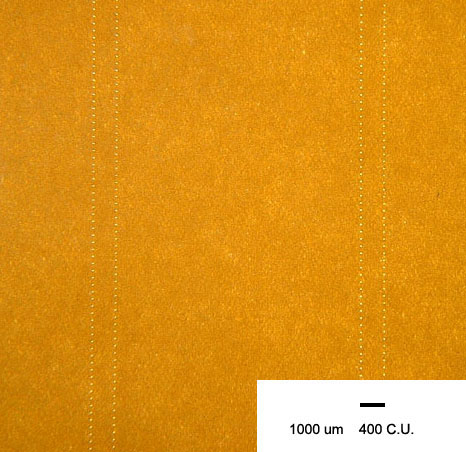

Other applications
The new high-power laser beam multiplexer open many other application fields, e.g. cutting, cut-offs, welding, surface finishing, drilling, polishing, forming, surface treatment, roughness improvement, etc.
Each of the 200 single perforation head can be positioned across the running web or static positioned material substrate. This automatic processes, equipments and devises open up completely new possibilities in industry, science or military or space laser applications.
more details lpm-1.html
MLL-1 – nano micro laser line perforation for web material as paper, metal, others and applications
patent pending DE102004012081
Introduction
The German-Thai-Chinese engineering company offers an innovative type of NANO and MICRO LASER LINE PERFORATION technology - that is world wide new. That type of perforation for web, sheet or substrate materials allows a high level of freedom in holes positioning with a variety of perforation designs as wave shapes, zigzag lines etc.
The special characteristics of the technology create fundamentally new product properties. It is adaptable to existing systems. They are looking for industrial partners of license agreements and/or technical co-operation.
Description
Conventional off line laser perforation machines and processes generating straight hole lines in the web direction of the cigarette tipping paper – as coaxial shape - or other material sheets. The exception is spray laser designs with randomly distributed holes in certain zones such as electrostatic perforation.
The new
nano micro laser line perforation technology generates sinus, waves, zigzags or
other kinds of lines of perforations hole in web direction as pairs of micro
laser lines.
Tipping paper is the paper around the cigarette filter.
Various new elements move each single laser beam in a sideways direction.

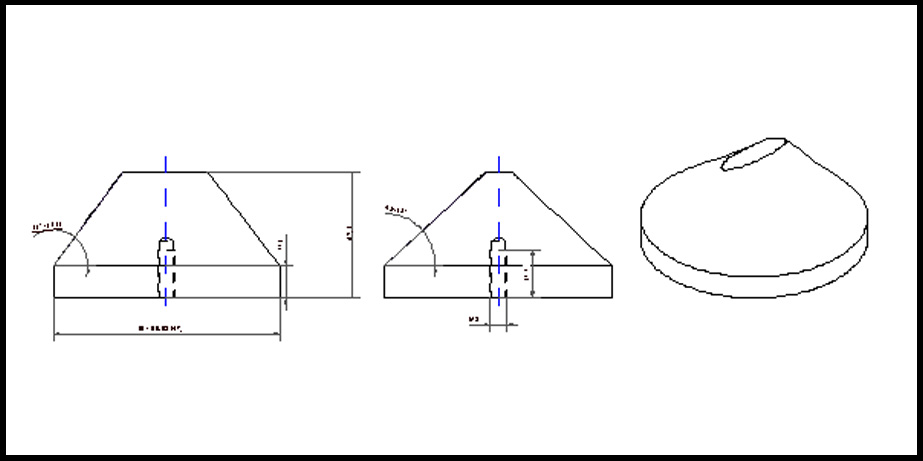
Product and
process advantages
Existing and new laser perforation machines systems
Applications and summary
The nano micro laser line perforation MLL-1 of web or sheet materials - such
as any kind of paper, metal, insulation, plastic - allows a high level of
freedom in hole positioning freedom with different perforation designs in the
form of waves, zigzag lines or other which result e.g. in optimized air
distribution characteristics in cigarette filters.
The special features of the nano micro laser line perforation create
fundamentally new product properties, e.g. final products for mouthpieces with
tipping paper on cigarette filters or other products of this kind which indicate
a brand name and is recognize able for everyone - if the holes are visible or
can be seen with a magnifying glass. Or anticounterfying and non copy able.



Just like a perforation cryptogram. This is performed by means of Piezo oscillators for laser beam deflections, as actuators with added metal optics or asymmetrical, rotary reflection cones. Mathematical functions and sequences are coupled by web speed.
The points of envelope curves of the selected perforation shape are calculated
and computed beforehand for the single holes and hole groups and monitored
during the perforation procedure by a programmable control system.
Innovative Aspects
MLL-1 nano micro laser line processes allow many applications with certain
beam diverts.
Main Advantages
Use of new beam divert elements allows easy and attractive modifications to
existing laser systems.
more details mll-1-micro-laser-line-perforation.html